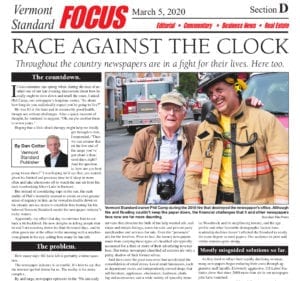
WOODSTOCK
- Barnard
- Bridgewater
- Hartland
- Killington
- Plymouth
- Pomfret
- Quechee
- Reading
- South Woodstock
- South Woodstock
- West Windsor
Please support the Vermont Standard Annual Appeal. Help now.




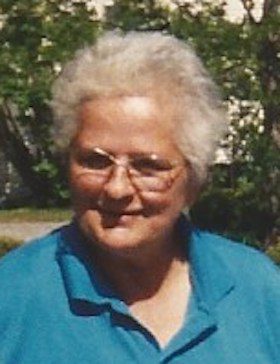

Championing affordable housing, The Naked Table Project heads to the State House
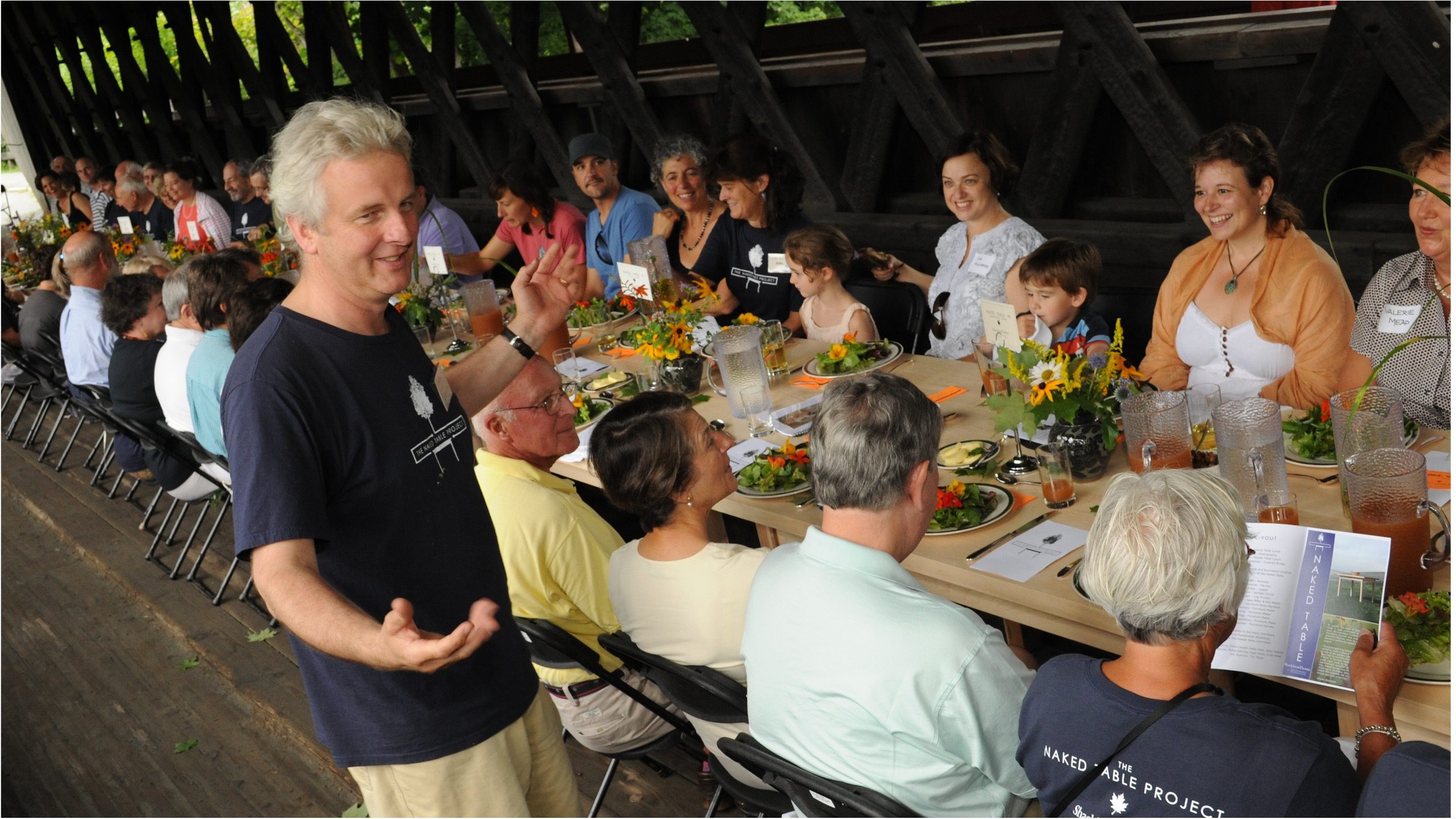
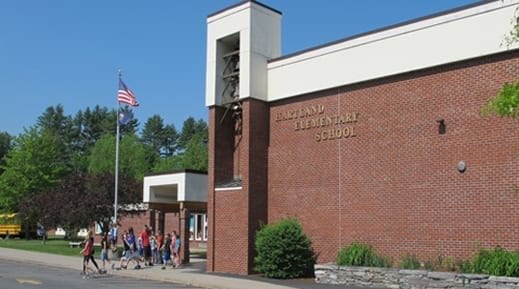
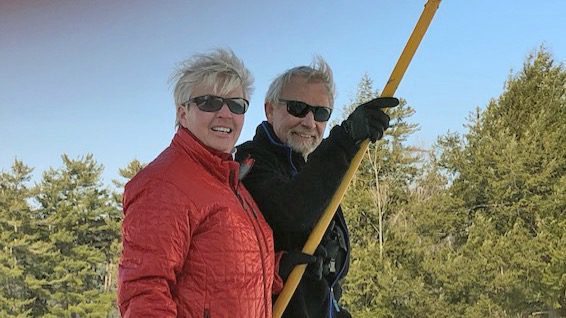
Recent Sports Scores






News
May 2
6:56 am
Court schedules hearing in Woodstock Foundation case
A hearing is planned for May 28 in Vermont Superior Court on efforts by current Woodstock Foundation leaders to try to delay, for at least six months, a lawsuit brought by two former longtime Foundation leaders over allegations of mismanagement and malfeasance at the Woodstock Inn & Resort and the Billings Farm & Museum.
Vermont Superior Court Judge H. Dickson Corbett, who is presiding at the Woodstock courthouse, has agreed to set aside one hour to consider several pending motions. They include the request by the defendants for a stay in the proceedings.
The judge had earlier established a time schedule that told the lawyers to be prepared for trial by Sept. 20.
Corbett, a former Orange County State’s Attorney, has directed the two sides to attempt mediation to try to resolve their differences. Burlington attorney Robert Hemley has been selected to mediate the case.
The 9 a.m. court hearing, which will be conducted on video by WebEx, will be the first time the judge and the various lawyers in the case have come together to try to resolve the dispute.
Foundation Directors James S. Sligar, the current chair, David M. Simmons, Michael D. Nolan, John T. Hallowell, Douglas R. Horne, William S. Moody, Gail Waddell and Angela K. Ardolic were named as defendants when the case was filed by Pomeroy and Iannuzzi in January 2023.
The defendants have asked for the special delay so they can seek an “independent special litigation committee to review the derivative claims” requested by Pomeroy and Iannuzzi and determine how to proceed, according to one of their court filings.
The plaintiffs’ primary local lawyer, Michael F. Hanley of Plante & Hanley in White River Junction, has said his clients will fight any delaying tactic.
Hanley also maintains the defendants are requesting relief that is not authorized by either the Vermont Nonprofit Corporations Act or the Woodstock Foundation’s own bylaws.
The lawsuit has its roots to late May 2022 when Iannuzzi and Pomeroy said they did some preliminary checking after hearing multiple serious complaints from numerous employees about claims of misconduct by officers, managers and employees at both the Inn & Resort and the Billings Farm & Museum.
The lawsuit maintains that the trustees, who were unhappy hearing the information, then proceeded to privately remove both Pomeroy and Iannuzzi during a secret, unauthorized board meeting as they prepared to deliver a report to the full board in November 2022.
Pomeroy and Iannuzzi filed the blockbuster lawsuit in January 2023 and the defendants responded initially with a counterclaim. They later filed a written answer denying the various misconduct claims.
For more information, please see our May 2 edition of the Vermont Standard.
May 2
6:56 am
'Woodstock Poetry Festival' emerges following Bookstock cancellation
Two weeks after the cancellation of this year’s Bookstock event, Peter Rousmaniere, Bookstock’s co-founder and board chair, and Chard deNiord, Bookstock’s 2024 poetry director, are unveiling plans for the Woodstock Poetry Festival.
Scheduled for the weekend originally slated for Bookstock, the new event will be hosted in partnership with Sundog Poetry and the North Chapel.
The festival currently has about 25 poets confirmed for the weekend, including three-time United States Poet Laureate Robert Pinsky, Green Mountain Review editor Elizabeth Powell, and National Book Award winner Brian Boyd.
While the festival’s lineup heavily overlaps with Bookstock’s original poetry schedule, the organizers have also added a variety of local poets to the event.
All of the festival’s programming, which deNiord anticipates will include a full roster of readings paired with a workshop or two on Friday afternoon, is going to take place at the North Chapel, the traditional home of poetry events during Bookstock.
While the poetry festival seems to have no shortage of interest from poets, poetry on its own can struggle to appeal to broader audiences and has a reputation for a lack of accessibility. Rousmaniere, however, hopes the festival, which he says will be immensely beginner-friendly, will help break down that connotation.
DeNiord is thrilled that Bookstock’s 2024 poetry events are back on the calendar, but he hopes their separation from the literary festival’s other programming will be temporary,“It’s an embarrassment of riches, and it would be a shame to see the larger festival die out. Although, it’s too early to know what will happen.”
For further details, please see our May 2 edition of the Vermont Standard.
May 2
6:55 am
Woodstock senior housing complex gets substantial funding
The potential redevelopment of the 26-unit Mellishwood Senior Residences at 36 Pleasant Street in Woodstock Village has taken a significant leap forward with the 2024 award of federal housing tax credits for the construction effort to Twin Pines Housing, which purchased the property in November of 2022. Assuming all things go as planned, the senior housing complex will consist of 39 units upon its completion — one two-bedroom and 38 one-bedroom units, representing a 50% increase in the senior community’s ability to house older residents in our community.
“In terms of absolute dollars, we are a little over halfway in terms of raising all the dollars needed for the project,” Twin Pines Executive Director Andrew Winter said Monday afternoon. “The funding that we just received — the allocation of low-income housing tax credits, which came from the Vermont Housing Finance Agency (VHFA)- is arguably the most competitive part of the financing for the project. There are a modest number of projects that get funded for tax credits every year,” Winter added.
“We’re excited to move forward with the next piece of the funding, which will hopefully be coming in the next month or so from the Vermont Housing and Conservation Board,” Winter offered on Monday, anticipating that work on the project could commence “later this year” if all the funding falls into place.
All 39 units in the proposed new Mellishwood senior housing complex are eligible for support from the Twin Pines Supportive Services team, which is dedicated to keeping people housed and avoiding eviction. The team partners with several state agencies and local nonprofits to provide a comprehensive mix of services, including food access, medical resources, and utility discounts, among other programs. In addition, four of the apartments proposed for the Mellishwood site and six units off-site within the Twin Pines’ property portfolio will be specifically targeted for formerly homeless or at-risk-of-homelessness seniors.
The Woodstock Village Development Review Board gave its approval to permitting of the Mellishwood project in January, including conditional use approval for fewer parking sites on the premises.
For further details, please see our May 2 edition for the Vermont Standard.
May 2
6:55 am
Championing affordable housing, The Naked Table Project heads to the State House
When The Naked Table Project, a non-profit organization affiliated with the ShackletonThomas furniture makers in Bridgewater, was established 16 years ago, its goal was to connect communities with sustainable forestry and the environment by teaching people to craft tables from Vermont’s iconic sugar maple. Since its founding in 2008, daylong Naked Table workshops have taught up to 1,000 people to build beauteous tables in Woodstock and communities throughout the Upper Valley, while reaching as far afield as western Massachusetts.
Each Naked Table Community Building Project concludes with a sumptuous lunch of locavore cuisine, all served to the workshop participants atop the very tables they created earlier in the day. Naked Table events over the years have benefited a bevy of non-profit organizations in the region. This year The Naked Table Project is embracing a new staging area — the Vermont State House Lawn in Montpelier — for a full-day event that is set for Saturday, June 1, from 9 a.m. to 6 p.m. The gathering is being held in collaboration with the Vermont Woodlands Association. Coincident with the shift to the State Capitol as the locus for the event, The Naked Table Project organizers have also added a new public awareness component to the project’s core mission and vision.

Charlie Shackleton, right, inspects sugar maple lumber at Gagnon Lumber in Pittsford. The wood will be used for The Naked Table Project table-building benefit for Central Vermont Habitat for Humanity, slated for the Vermont State House Lawn on Saturday, June 1. JuanCarlos Gonzalez Photo
“This year, the event seeks to raise awareness about the connections between sustainable forest management and our current housing crisis in the state,” ShackletonThomas founder and master furniture maker Charlie Shackleton said in an email statement last week. Proceeds from this year’s table-building event and banquet, to be held under a tent on the State House grounds, will benefit Central Vermont Habitat for Humanity. Plus there’s an additional connection to Vermont’s governance and political leaders embedded in the 2024 Naked Table project: participants who purchase tables in advance will use sugar maple wood sustainably harvested from former U.S. Sen. Patrick Leahy’s certified Vermont Tree Farm to build tables. Leahy himself will address the audience upon the completion of the tables.
“The event will raise awareness for how essential forest products are for basic societal needs like housing and how important it is that forest products are harvested sustainably. Responsible stewardship fosters healthy, diverse forests while providing for our communities, especially those in need,” Shackleton explained.
Participation in the full Naked Table Project event on June 1 — including the maple table, educational forest walk, lunch for two created from locally grown and prepared produce by Cloud 9 caterers of Colchester, and two commemorative tee shirts — is $2,500, of which $1,800 is tax deductible. Both Habitat for Humanity and The Naked Table are registered non-profit organizations. Twenty-five percent of all profits from the event will go to Central Vermont Habitat for Humanity. For more information, please call (802) 672-5175, email [email protected], or visit NakedTable.com.
For further details on this, please see our May 2 edition of the Vermont Standard.
May 2
6:55 am
Petition overturns Hartland school budget passage, revote scheduled
Hartland residents will be returning to polls once again after a petition with more than 200 signatures succeeded in overturning the April 2 passage of the Hartland Elementary School budget.
The new vote will take place Tuesday, May 28 from 7 a.m. to 7 p.m. at Damon Hall in Hartland. It will be conducted by Australian ballot and preceded by an informational session on Tuesday, May 21 at 7 p.m.
The article, which was approved by 9 votes (320-311), will remain unchanged from when it was last voted on. It asks for voters to approve a budget of $11,040,567. According to Windsor Southeast Supervisory Union superintendent Christine Bourne, this is due to state statute, which says that “the form of the ballot shall be as follows: ‘Article 1: cite the article to be reconsidered as lastly voted].’”
“This is a reconsideration vote. It’s a reconsideration of the budget that was passed. So we won’t change that number. This vote will determine whether or not that budget passes or fails. It’s like a second vote on the same budget,” said Bourne.
For further details on this, please see our May 2 edition of the Vermont Standard.
May 2
6:55 am
Ascutney Outdoors transitioning to a new generation of leaders
The privately owned Mount Ascutney ski area was a centerpiece of economic activity in West Windsor for more than 80 years before it shuttered and went into bankruptcy in 2010. As the quintessential Vermont small town reeled from financial and social impacts of the ski area’s closure, it took a visionary group of committed community leaders to revive and reinvent the ski area under the ownership of the Town of West Windsor.

Glenn and Shelley Seward have been integral to the rebirth of the vaunted Mount Ascutney ski and mountain biking area under the auspices of Ascutney Outdoors (AO) and the Town of West Windsor over the past decade. The pair will step down as founding members of the AO Board of Directors and become Board Emeriti when the organization convenes for its annual meeting next week.
Courtesy of Shannon Harrington
West Windsor native Shelley Seward and her husband, Glenn, who has lived in the community since he was a child, have been at the very heart of the renaissance of Mount Ascutney — negotiating the purchase of the ski area by the town, overseeing its renewed development and management, and managing its finances over the past decade, all under the umbrella of Ascutney Outdoors (AO), the community organization they helped to found.
As lifelong and near-lifelong residents of West Windsor, the Sewards were uniquely positioned to bridge any divides that may have existed in the community between the natives and more recent denizens who were especially engaged in the efforts to revive the ski area under town ownership.
Next week, Seward, who presently serves as the chair of AO, and Glenn, who has been a heavily engaged volunteer board member since the organization’s inception, will step down from their substantive leadership positions and named board emeriti.
Steve Wood, a native Vermonter who grew up on the sides of Mount Ascutney, where he learned to ski in the 1950s and 60s will take over for Seward as Interim Chair of the AO Board at the non-profit’s annual meeting on May 7.
“The restructuring of the organization — moving the board and the management of the mountain into a new iteration — is just the subtext for this story,” Wood said last weekend. “The founders are sort of cycling off and it will be up to a new generation of AO board members to learn how to manage a non-profit sustainably so that Brownsville and West Windsor don’t have to go through the trauma that the closing of the ski area brought back in 2010,” he continued. “But the real story is what Glenn and Shelley have contributed for the last 10 years. And even as they step into emeriti status, physically they are not going anywhere. Shelley is going to take on the role of a non-paid bookkeeper and they’ll always be around.”
For further details on this, please see our May 2 edition of the Vermont Standard.
May 2
4:49 am
The Standard’s "Do802" app goes live
Do802.com, a new service of the Vermont Standard, is now live. The free, web-based app features a comprehensive calendar of events and an up-to-the-minute feed of deals, discounts, and announcements posted by local businesses. Do802 was designed to help quickly connect people to everything the Upper Valley offers. From favorite restaurants, local festivals, and unique exhibitions, to last-minute discounts on specialties and handmade Vermont products, there’s so much in the Upper Valley to take advantage of. Do802 offers a simple way to quickly find what to do so that residents and visitors alike can spend less time looking for their next experience, and more time enjoying it.
It’s simple to use Do802. The first section is an easy-to-navigate, interactive listing of things to do for fun and fulfillment in the Upper Valley each day. The calendar on Do802 offers a great way to see what’s happening, from concerts to community events to club meetings. Rather than digging through different websites, feeds, or emails, Do802’s “What To Do” section offers a simple, fast, and comprehensive way to find the right experience every time.
The second part shows a rolling log of special offers and announcements posted by local businesses and organizations. It features last-minute offers (e.g., “Half off muffins for the next hour!” or “Early bird special on tickets today only.”). It also includes reminders and announcements (e.g., “In thirty minutes, the band will take the stage,” or “Free book signing in two hours.”). Do802 is a way for businesses, both treasured and new, to instantly communicate with residents and tourists alike, giving users a chance to benefit whenever a bakery bakes too much bread or a matinee show doesn’t quite sell out.
Do802 was designed by the Vermont Standard to help fund the journalism in its paper. The Standard, like all local newspapers around the country, needs additional revenue to help make up for the loss of traditional print advertising. Do802 is just one way the Standard will be deploying creative solutions to help keep its community coverage flowing.
Do802 is a progressive web app, which means it can behave both like a website and a mobile app. Users can go to the Do802 website on any phone, tablet, or computer. On a mobile device, they can also save Do802 to their home screen, so it is easily accessible and acts just like an app. To save Do802 to your home screen on iPhones, go to Do802.com and click the share button (a square with an arrow pointing up) at the bottom of the screen. Scroll down the list of actions before tapping on “Save to Homescreen.” On Android, the same thing can be done in the three-dot menu at the top of the screen.
Features
May 2
6:56 am
Holocaust survivor to speak at Shir Shalom Friday evening
By Margie Elsberg, Special to the Standard
Fran “Fay” Malkin was four when she and her mother, Lea Maltz Letzter, went into hiding in a hayloft above a pigsty behind a home at No. 4 Street of Our Lady, in the town of Sokal, Poland.
Nazis had poured into Sokal in the autumn of 1939, and the following June, little Fay’s father, Eli Letzter, was one of 400 Jewish men and teenage boys who were ordered to report for a work detail. But there was no work. All 400 were taken to a brick factory outside of town and murdered by an SS firing squad.

For weeks, Fran Malkin’s family crawled through barbed wire in search of a non-Jewish neighbor who would hide them from the nazis. Photo Provided
By late September of 1942, Sokal’s Jews knew there was little hope for their survival. Two thousand had been forced onto train cars bound for the Belzec extermination camp, and the few thousands Jews who remained, including four-year old Fay, her mother and grandfather, her mother’s sisters and brothers, and the only other surviving cousin, seven-year old Chaim, were forced to leave their homes and move into a makeshift ghetto.
For weeks, Fay’s grandfather, Moshe Maltz, and her uncles and aunts crawled through the barbed wire in search of a non-Jewish neighbor who would agree to hide them before the next train left for Belzec. That’s when Francisca Halamajowa (pronounced “Halamayova”), a Polish Catholic woman in her late 50s who had known the Maltz family for years, walked past the ghetto’s Nazi guards and offered to help Moshe and his family.
In November, 13 members of the Maltz family, as well as a Jewish doctor, his wife, and son, moved into the hayloft.
Malkin is 85 now, and she will tell her story on Friday, May 3, at the Woodstock Area Jewish Community/Shir Shalom synagogue, delivering the Sidney Gravitz Memorial Lecture immediately following sabbath evening services. All are welcome to attend the lecture at 8 pm, as well as services, which will begin at 7 p.m.
“I didn’t talk about it for 70 years,” Malkin said last week. “I wouldn’t talk to anybody. But then I went back and saw the brick factory where my father was murdered, and now I can’t stop talking. I saw what happened to my life and my mother’s life only because we were Jewish.”
Sidney and Zecil Gravitz were long-time active members of Shir Shalom, according to Shir Shalom President Mike Brown. After Sidney’s death, the Gravitz family established a fund that made it possible for the Woodstock synagogue to obtain a Holocaust Torah, a Torah scroll that was looted by the Nazis from a Czech synagogue during World War II. The fund also made it possible for Shir Shalom to develop the Gravitz lecture series, an annual observance of Yom HaShoah in early spring, Holocaust Remembrance Day.
“The Holocaust Torah and Zecil herself—she is well over 100 years old—are beacons of hope,” Rabbi Ilene Harkavy Haigh of Shir Shalom said last Sunday. “Zecil told me yesterday that ‘We must stay in conversation. We must somehow find a way to transform the horror and pain of what has happened to our people into a vigilance and compassion for the other. This is the only way forward.’”
During the early years of the new century, Malkin and her cousin Judy Maltz, an Israeli journalist and filmmaker, decided that they wanted to make the family’s story available to a broad audience. Fay had been too young during the war to remember much about her 20 months in hiding or to understand the horrific context, but the cousins had a diary that Malkin’s uncle Moshe (Judy’s grandfather) had handwritten in Yiddish throughout the ordeal.

A screenshot from the documentary “No.4 Street of Our Lady” depicts Malkin and her mother, Lea Maltz Letzter. Photo Provided
Moshe Maltz wrote, Malkin explained, that he kept the diary so his family’s story would survive, even if he and the others were discovered by the Nazis.
“Maybe you’re going to kill me in the end,” he wrote, “but the world will know.”
Moshe had every reason to question whether survival was possible. In 1939, six thousand Jews lived among Russians and Ukrainians in the Polish town of Sokal. By 1944, only 30 had survived. Mrs. Halamajowa and her daughter Helena hid 16 of them.
Armed with the translated diary, Judy and Fay invited their cousins to return to Sokal, to find the house at No. 4 Street of Our Lady, to talk with Mrs. Halamajowa’s granddaughters, and to meet with members of the community who still live in Sokal and remember what it was like during the Nazi’s reign of terror.
The story that Malkin will talk about on Friday at Shir Shalom is told with great compassion in the documentary, which was released in 2009. It’s the story of the cousins’ return with a cinematographer more than 60 years after they, their parents, or their grandparents left the hayloft and Poland in hopes of restarting their lives.
To watch the documentary, “No.4 Street of Our Lady,” visit tinyurl.com/yjpkzw8k. Malkin suggested that seeing the film will enhance the experience of hearing her talk.
Rabbi Haigh returned to the significance of the Gravitz lecture and the Holocaust Torah. “Any Torah scroll is considered a tree of life, an Eitz Chayim,” she said, “but a Torah scroll rescued from the ashes of Europe and entrusted to us for educational purposes supports our pledge to ensure that our children and the children of our neighbors and friends understand what might happen to humanity when hate unbridled is unleashed.”
Heidi Fishman, the daughter of a Holocaust survivor, a member of Shir Shalom, and a member of the Board of Directors of the Vermont Holocaust Memorial, will introduce Malkin on Friday night and will stress the importance of education.
“Vermont is the only New England state that does not mandate Holocaust education” in its schools, she said. Fishman said she advocates for passage of a bill during the current legislative session that would require Vermont public schools to provide Holocaust education.
May 2
6:50 am
102-year-old Dorianne Guernsey is the last of the ‘grande dames’ of Woodstock
By Tom Ayres , Senior Staff Writer
Lifelong friends and acquaintances describe beloved Woodstock centenarian Dorianne Guernsey as adventuresome, inquisitive, and passionate about people, the arts, and culture.
Guernsey, who turned 102 last October, is the last of what her longtime friend and caregiver, Tina Miller, calls “the grande dames of Woodstock,” a quartet that included the late Polly Billings, Jane Curtis, and Ann Debevoise, each of whom has passed away in recent times. Guernsey survives her Upper Valley friends of nearly six decades.

Dorianne Carolyn Downe and Otis Guernsey Jr. were wed in the chapel of St. Bartholomew’s Episcopal Church in New York City on Dec. 11, 1943. Courtesy of Dorianne Guernsey
The story of Guernsey’s extraordinary life unfolds at the intersection of three quintessential and successful American families of the mid-20th Century — the Guernseys, Graffs, and Neffs. It’s also the story of nearly 60 years of connection with the arts, culture, and politics of Woodstock, Pomfret, and the surrounding communities for the engaging 102-year-old. When a visitor joined Guernsey for lunch at her Mountain Avenue home in Woodstock last Thursday, the pair pored over lovingly assembled scrapbooks and photo collections that document Guernsey’s extraordinary life, in addition to spotlighting the countless friends and admirers from the Woodstock area who’ve feted her at both her 90th birthday celebration in 2011 and a centenary gathering at the Lakota Club in October 2021. Subsequent conversations with decades-long friends and admirers of the engaging Guernsey further fleshed out her compelling biography.
Born to industrialist George Downe and his wife, Vera Strauss Downe in Bayonne, N.J., on October 15, 1921, Dorianne’s storied path took her to France between the World Wars, to London and Switzerland during her adolescent school years, and then back to the United States after World War II, where she met and married the distinguished journalist Otis Guernsey Jr., the chief theater and film critic of the long-ago citadel of New York City journalism, the Herald-Tribune. Otis also edited the celebrated “Best Plays” collection, annual tributes to the best new American plays, for nearly 40 years, and was the longtime head of the Drama Quarterly magazine.
When the Herald-Tribune ceased publication in the mid-1960s, Otis and Dorianne opted to uproot themselves from their spacious New York apartment and the abundant Manhattan cultural scene and relocate to a farmhouse in North Pomfret, where one of Otis’ Tribune colleagues, fellow arts and entertainment reporter and critic Bert McCord, had purchased a home in the late 1950s. The Guernseys soon persuaded another New York friend, Patricia “Patsy” Kassner Graff, to visit them in Vermont, setting up a sort of “blind date” between Patsy, who had tragically lost her husband at the young age of just 45, and eligible bachelor McCord. The pair hit it off famously and, within time, Patsy married McCord and moved to North Pomfret with her two sons, Wesley Jr., then 14, and Chris Graff, 12.
Dorianne’s lifelong bond with Patsy Graff McCord and another childhood friend, the late Eric Neff, goes back to those years between World Wars I and II in France when Guernsey’s father George Downe was a European representative for the American Radiator Company, Patsy’s dad Lacey Kassner was the head of distribution for Columbia Pictures in Europe, working closely with the likes of Charlie Chaplin, and Eric Neff’s father Lewis was a prominent banker and commodities broker. It was an exciting time for a trio of close friends — Dorianne, Patsy, and Eric — separated by only a few years in age and inseparable in youthful pursuits such as frolicking on the summertime beaches of Normandy and Saint-Jean-de-Luz or romping in Parc Monceau, near the Downe’s family’s apartment in Paris.
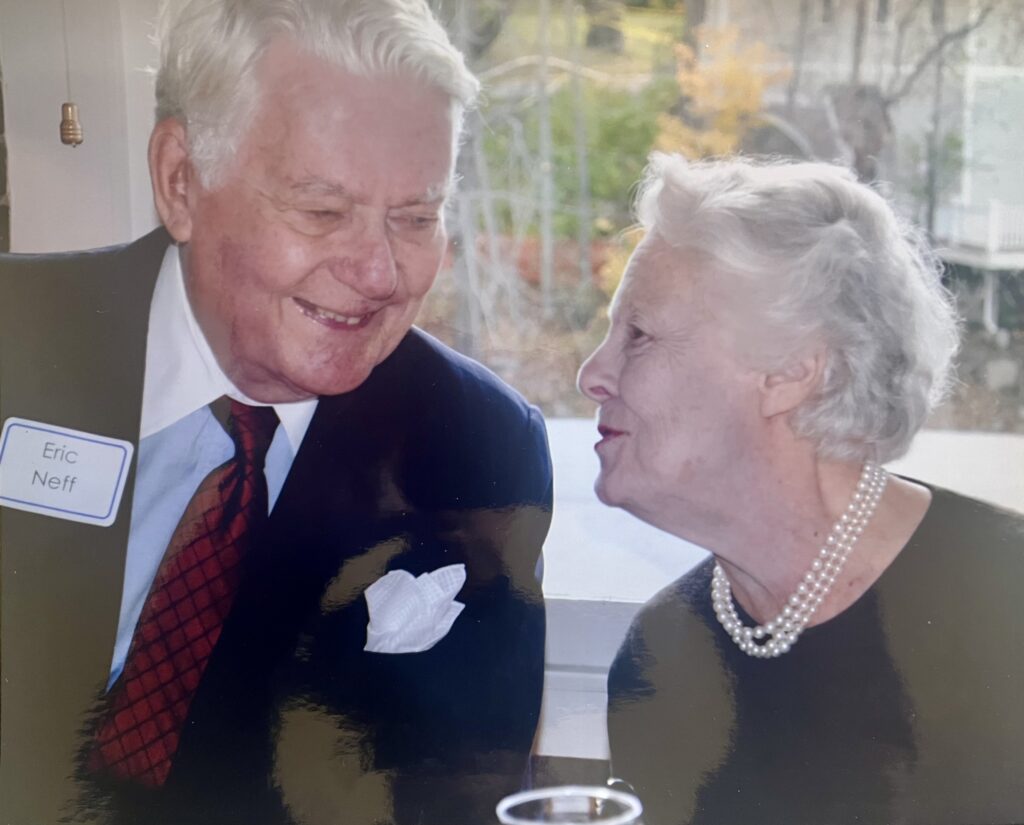
Lifelong friend, the late Eric Neff toasted his beloved childhood pal Dorianne Guernsey at a 90th birthday celebration at the Simon Pearce Restaurant in Quechee on Oct. 15, 2011. Courtesy of Dorianne Guernsey
It took the advance of World War II and the German occupation of France to separate the three friends, albeit only for the time being. The Neffs returned safely to their native New York before the war began in 1939. Dorianne’s and Patsy’s escape from the advancing Nazi forces was especially harrowing — part of the cement that bonded the two, plus Patsy’s younger sister Pammy, for a lifetime.
In the summer of 1940, Dorianne, her mother, and the Kassner’s mom Priscilla moved to Saint Jean-de-Luz and rented a big house. They stayed there for ten months, swimming in the ocean. Dorianne learned to drive there when she turned 17. With the Germans approaching Paris, 750 kilometers north of their beachside idyll, the Downes, Kassners, and several other friends and relatives opted to leave southern France. When it came time to leave, they learned that they could take only one suitcase and a limited amount of cash. Dorianne’s mother Vera and her Aunt Ethel piled into one car for the torturous escape trip into Spain, while neophyte driver Dorianne chauffeured her friends Patsy and Pammy, their mom Priscilla, and all the entourage’s worldly belongings in another vehicle. Dorianne recollected that she fretted throughout the trip, trying to avoid all the abandoned vehicles and people fleeing on foot along the road. She got in the last vehicle line out of France and crossed into Spain, where the Downes sold the car, boarded a train to Lisbon, and caught the famed S.S. Manhattan ocean liner to New York. The Kassners followed later, first to Los Angeles and then to New York.
The Neffs, back stateside for two years, stayed in touch with both the Downe and Kassner families — and subsequently the Guernseys as well. Eric Neff, like Patsy Kassner, remained a devoted, lifelong friend of Dorianne’s, visiting her frequently over nearly 70 years, wherever the Neff and Guernsey families’ travels led them. “We would see them whenever we were back here in the states,” 84-year-old Nancy Neff said in a phone call from her Burbank, Calif. home last Friday. “My husband was in the Foreign Service — the State Department, so we lived abroad. I met up with Dorianne for the first time when we were on leave and I was pregnant with Rebecca,” she added. “Over the years, we traveled a lot together — to Italy and Greece and, of course, France. I remember we celebrated my husband’s 80th birthday in Sicily.”
Rebecca Neff Short, who was born in 1972, also participated in the phone chat about Dorianne. “I was a little girl most of the time I was around Otis and Dorianne,” she offered. Short refers to the Guernseys as aunt and uncle, even though they are not blood relatives. “I always remember how much vitality Dorianne had,” Short said. “She was just a constant presence in my father’s mind. She visited us when we lived in Brussels. She’s my godmother, so we’ve always been in contact, ever since I was a little girl,” the 52-year-old added. “She’s just been this vibrant presence in my life for as long as I can remember.”
Dorianne Downe met Otis Guernsey Jr. through her Aunt Margot shortly after settling in New York. Soon they were seeing one another often, sharing evenings at such fashionable Manhattan hangouts as the famous Stork Club. Dorianne Carolyn Downe became Mrs. Otis L. Guernsey in the chapel of St. Bartholomew’s Episcopal Church on Park Avenue in New York City on December 11, 1943. Soon, Otis’ long tenure as the theater critic and entertainment editor for the Herald-Tribune began to blossom, while Dorianne worked as a publicist for Boeing and General Motors. The couple lived at 9 East 10th Street in Greenwich Village, where Dorianne frequently strolled through Washington Square Park with her poodle, Morgan, and miniature Schnauzer, Bingo.
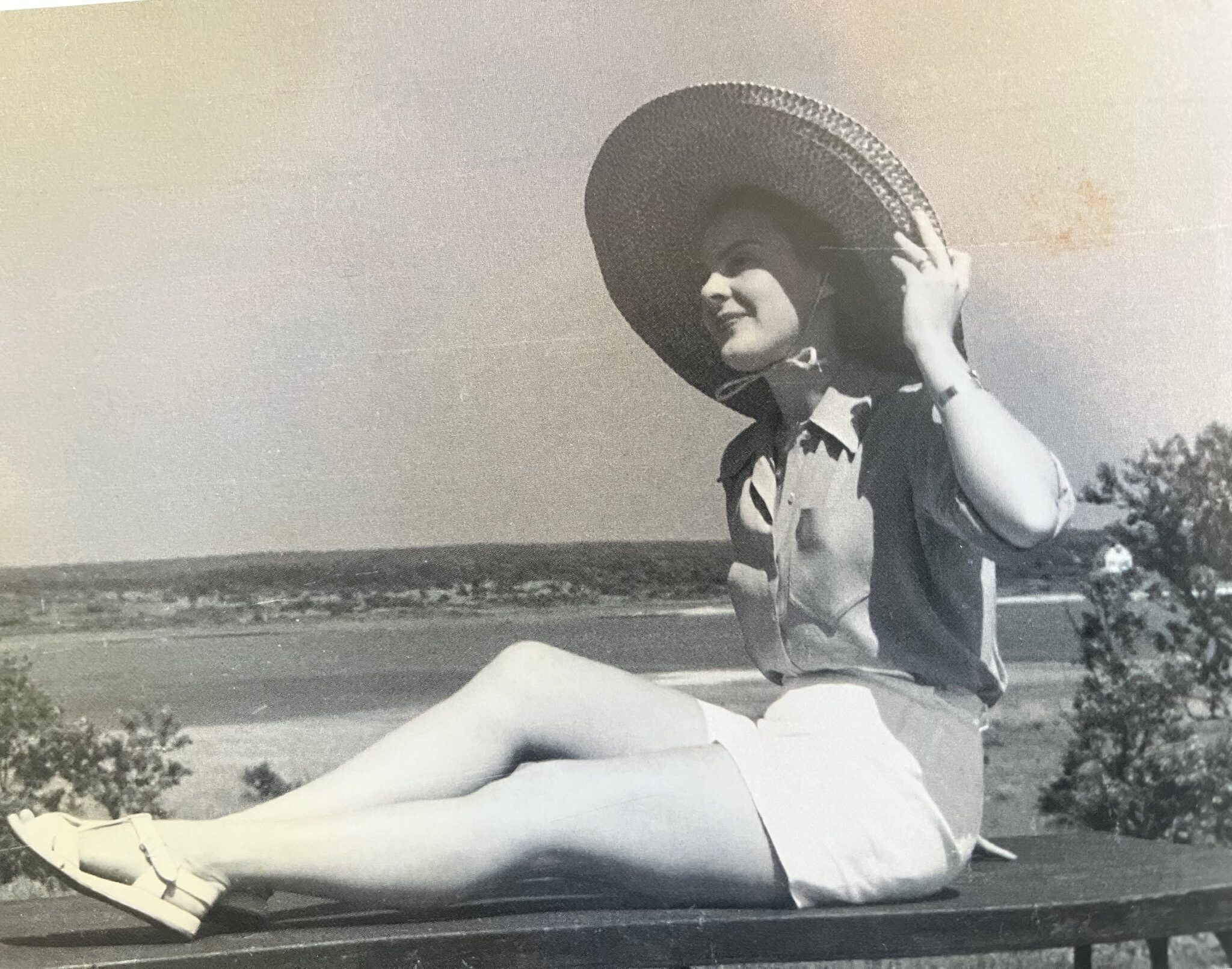 Dorianne Guernsey struck a classic, fashionable pose in this undated beachside photograph from Martha’s Vineyard in the late 1940s or early 1950s.
Dorianne Guernsey struck a classic, fashionable pose in this undated beachside photograph from Martha’s Vineyard in the late 1940s or early 1950s.
Courtesy of Dorianne Guernsey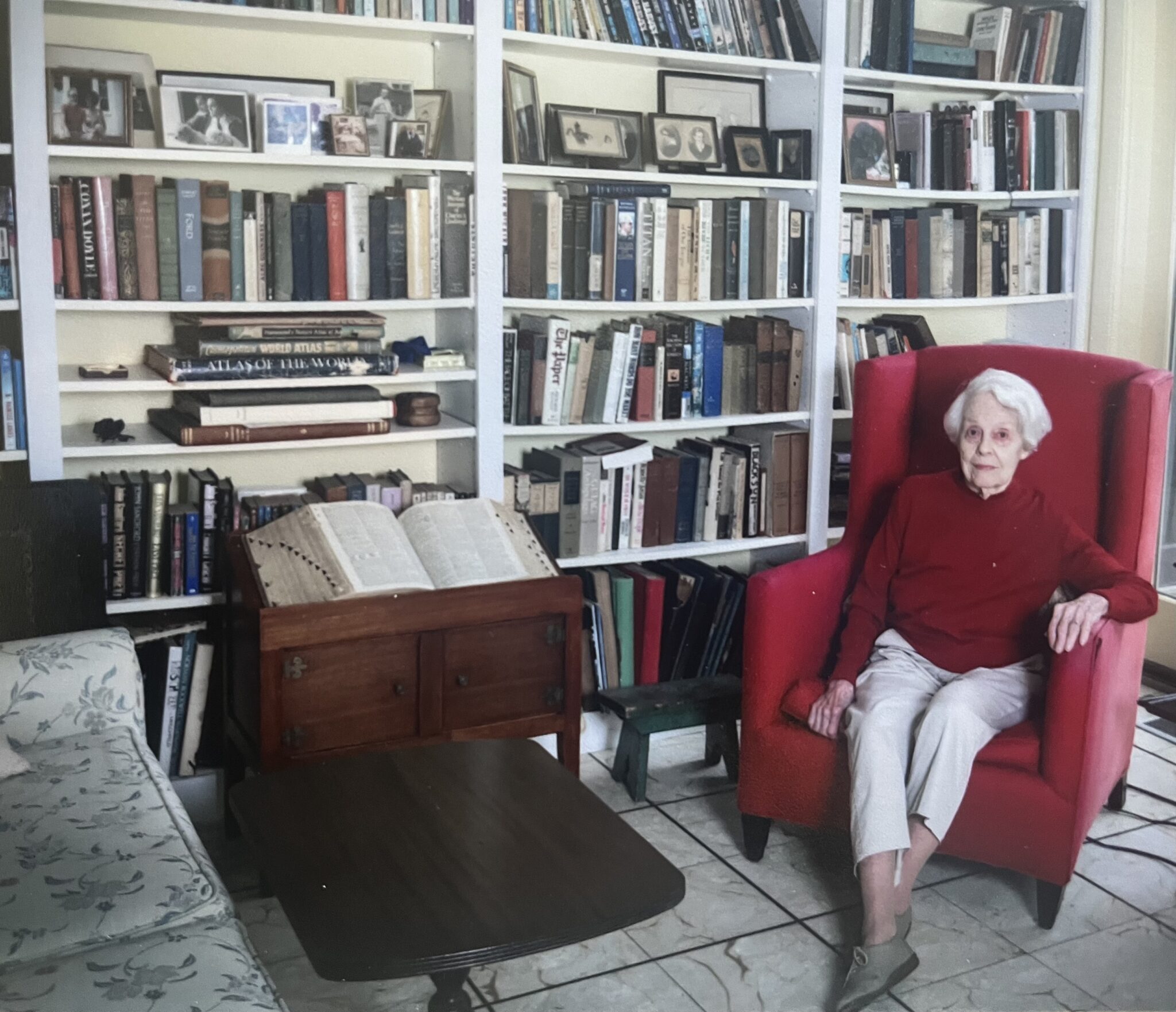 Dorianne at 101, relaxing at her home on Mountain Avenue in Woodstock in the fall of 2022.
Dorianne at 101, relaxing at her home on Mountain Avenue in Woodstock in the fall of 2022. Dorianne Gournsey’s roots in Vermont go a long way back. One summer in the 1920s, the Downe family went to visit with George Downe’s mother, Dorianne’s grandmother, at her farm on the shores of Lake Champlain. There Dorianne met her American family and played in the lake with her cousins.
Dorianne Gournsey’s roots in Vermont go a long way back. One summer in the 1920s, the Downe family went to visit with George Downe’s mother, Dorianne’s grandmother, at her farm on the shores of Lake Champlain. There Dorianne met her American family and played in the lake with her cousins.
Courtesy of Dorianne Guernsey Dorianne Gournsey’s roots in Vermont go a long way back. One summer in the 1920s, the Downe family went to visit with George Downe’s mother, Dorianne’s grandmother, at her farm on the shores of Lake Champlain. Dorianne met her American family and played in the lake with her cousins. Courtesy of Dorianne Guernsey
Dorianne Gournsey’s roots in Vermont go a long way back. One summer in the 1920s, the Downe family went to visit with George Downe’s mother, Dorianne’s grandmother, at her farm on the shores of Lake Champlain. Dorianne met her American family and played in the lake with her cousins. Courtesy of Dorianne Guernsey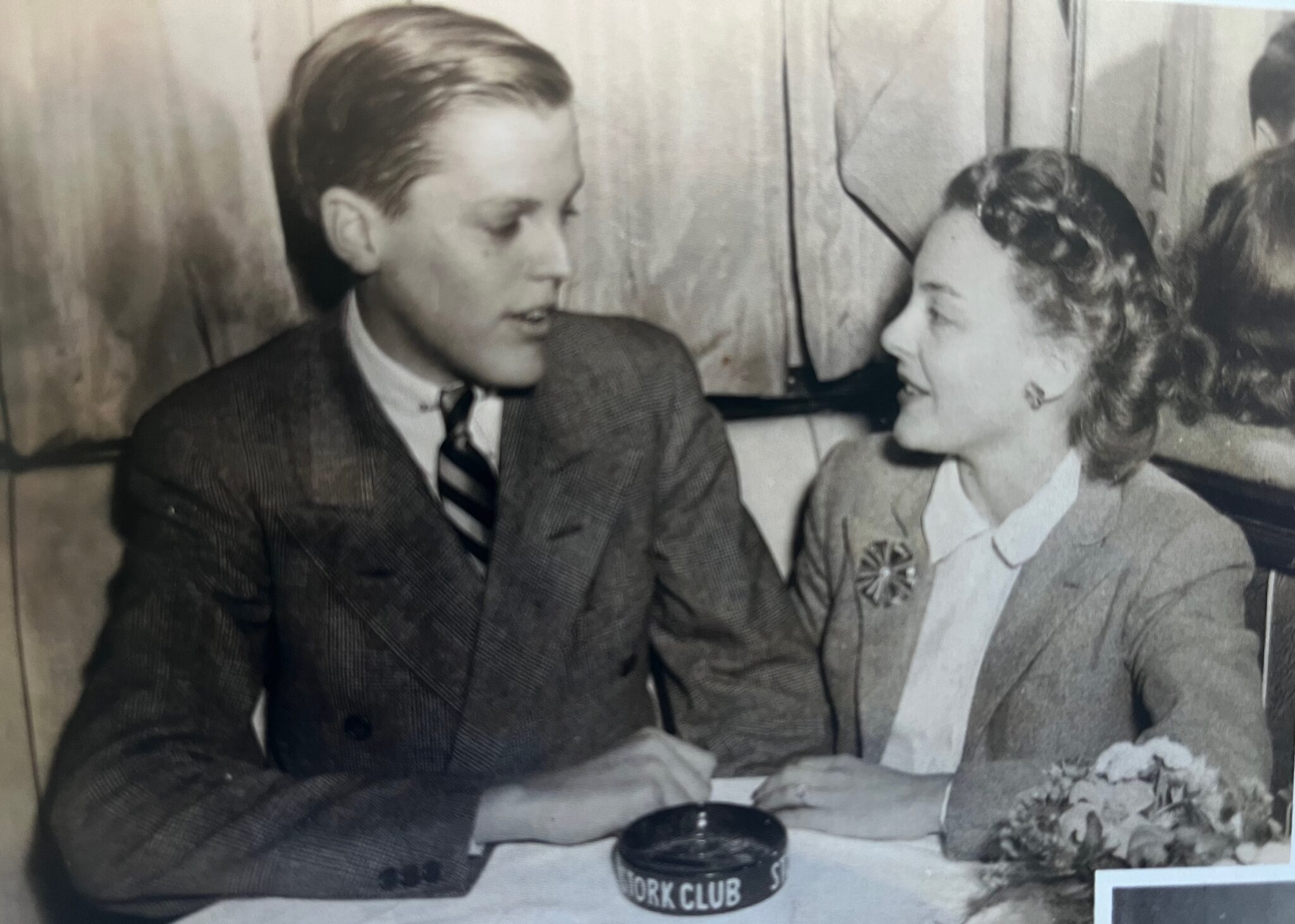 Otis Guernsey and Dorianne Downe began dating in the early 1940s, after being introduced to one another by Dorianne’s Aunt Margot. The couple, who married in December of 1943, are shown here at the legendary New York night spot, The Stork Club.
Otis Guernsey and Dorianne Downe began dating in the early 1940s, after being introduced to one another by Dorianne’s Aunt Margot. The couple, who married in December of 1943, are shown here at the legendary New York night spot, The Stork Club.
Courtesy of Dorianne Guernsey
For the next 15 years, it was a captivating, charming life, with Dorianne serving as an engaged, insightful adviser to Otis, counseling him on his work and play selections for the “Best Plays” series. The two were central figures in the exploding arts and culture scene of postwar Manhattan. Sailing also became a constant in Dorianne’s and Otis’ lives during this period, whether it was sailing from Bridgeport, Conn., along Martha’s Vineyard, or up and down the East Coast — even traveling to Australia to watch the New York Yacht Club try to recapture the America’s Cup.
Then, in the mid-1960s, as the Herald-Tribune fell into financial turmoil, the Guernseys turned their world upside down and left their year-round environs in hyperactive New York, joining their good friend Bert McCord in pastoral North Pomfret. Otis continued to edit the annual “Best Plays” series, which he compiled for 36 years from 1964 until 2000 and carried on at the helm of Drama Quarterly, the respected television, film, and drama publication. Regular business trips back to New York were standard fare for the theater critic, while Dorianne immersed herself in the Woodstock area social and cultural scenes. She joined with Polly Billings and other community leaders, including Gennie Carouso, Patsy Niles, and Bob Belisle in helping to found Pentangle Arts, and volunteered at several Woodstock area art galleries, most notably the late Ellison Lieberman’s Gallery 2 in the 1970s and ‘80s.
An inveterate reader, Dorianne long participated in a monthly book club with her cherished friends Curtis, Debevoise, and Billings. Wesley Graff Jr., who spent his teenage years in Pomfret with his mom, Patsy Kassner Graff McCord, and then went on to head the film department at UVM and be a celebrated documentary filmmaker, remembers two things in particular about the Woodstock area “grande dames” that were especially memorable from his youth.
“Dorianne, my mother, Ann Debevoise, and Jane Curtis would all get together for what they called their ‘Frunch’ Club, because they all spoke French. They’d get together for lunch somewhere once a week and speak to each other in French,” Graff said, chuckling. The 73-year-old filmmaker, who retired from UVM in 2011, also fondly remembers how Dorianne and her friend Billings advocated for him in his “long-haired hippie days” when he had a novel idea for a Christmastime pursuit along The Green in Woodstock Village. “I wanted to roast chestnuts and just give them away on the main street there in the Village. The selectboard said that sounded crazy and they wouldn’t let me do it. But Dorianne and Polly spoke to them and they changed their minds and said I could do it. I still remember having a great time, standing there with that hibachi,” Graff enthused. “Dorianne was always there for our family gatherings,” Graff, who now lives in Fairlee, added. “There’s so much history there. She was just so much fun — and she and Otis were always family. My wife and I still get down to Woodstock four or five times a year to visit Dorianne.”
Shortly before he passed away in 2001 at the age of 82, Otis Guernsey persuaded Dorianne to leave the North Pomfret farmstead and move into a smaller, more manageable home on Mountain Avenue in Woodstock Village. The centenarian lives there to this day, cared for in recent years by her friend Miller and visited regularly by a coterie of friends and neighbors who continue to hold her dear. Mountain Avenue neighbor Linda Smiddy first met Dorianne when she settled into her new abode across the street and they’ve been fast friends ever since.
“I often go and visit Dorianne and we sit there and go through those scrapbooks and she shares her memories,” Smiddy said last weekend. “She’s just incredible, with all those stories of growing up in France and all the ballets and theater she so thoroughly enjoyed in New York. She’s just so passionate about the arts. She’s had a very sophisticated life. I remember when she and I used to look out over Faulkner Park and talk about books. I’d be out in the yard and she’d be walking her dog and we would stay there for ages, just talking about various forms of literature.”
May 2
6:45 am
Woodstock chef Emery Gray named executive pastry chef at Trapp Family Lodge
By Lauren Dorsey, Staff Writer
After five years as a pastry chef at the Woodstock Inn and three as the Farm to Table manager at Billings Farm, Emery Gray will be returning to the Vermont culinary scene beginning Saturday as the new executive pastry chef at the Trapp Family Lodge in Stowe. Gray, who has been working in Boston for the past year, will be stepping into her new role just two days before the April 8 eclipse is predicted to bring swarms of travelers to the area. “What a way to start. It’s going to be incredible,” Gray told the Standard. “I’m ready to jump in with both feet. It’ll be just like the thick of foliage season.”

Gray’s love of baking began early. She knew she wanted to be a chef when she was in the third or fourth grade. By the time she entered high school, Gray had begun pursuing her dream in earnest, attending a culinary arts program for all four years. Courtesy of Emery Gay
Gray’s love of baking bloomed early, during long afternoons spent helping her grandmother create delicacies and share them with her family. “It’s very cliche, the whole ‘baking with your grandmother when you were younger’ [story], but it really sparked my love and joy for food,” said Gray. “I knew I wanted to be a chef probably since the third or the fourth grade.”
Gray began pursuing her dream in earnest long before most people have any notion of what their future careers might be, attending a culinary arts program for all four years of high school. By the time she graduated in 2007, Gray had decided to specialize in pastries and began studying at the Culinary Institute of America in Hyde Park, N.Y.
Throughout her journey, Gray has always strived for perfection; the slim margin of error inherent to baking is part of what drew her to it in the first place. “I’m such a rule follower in life that I really love the specific set of instructions and the exact way a recipe has to come together. You have to follow the ratios and the rules,” said Gray. “Pastry requires so much finesse and concentration to create, and I don’t [just want to create]. I want people to sit down and say, ‘That was the best that I’ve ever had.’”
After earning a bachelor’s in business management, Gray’s love of pastries eventually landed her at the Woodstock Inn in 2015. “I love the variety that a hotel/resort setting offers,” said Gray. “You get to challenge yourself in many ways and focus on so many different facets of pastry from making breads to wedding cakes.”
While at the Inn, Gray worked her way up. By the end of her tenure, she had designed the pastry menus for both the Red Rooster and the Tavern. “There were a lot of opportunities there to learn and grow,” she said, “and eventually getting to put my dishes out for people to enjoy was really wonderful.”
After half a decade, however, Gray was ready to try something new, so she hopped over to Billings Farm & Museum. In her new role, Gray oversaw the museum’s cheese production, expanded their food offerings, and taught cooking classes.
 Gray’s love of pastries stems, at least in part, from her love of perfection. The strict rules, tiny margins of error, and specific methods drew her in from the very beginning.
Gray’s love of pastries stems, at least in part, from her love of perfection. The strict rules, tiny margins of error, and specific methods drew her in from the very beginning.
Courtesy of Emery Gray Emery Gray hopes to add wedding cakes to the Von Trapp Lodge’s offerings. Currently, the lodge contracts out all of their wedding cakes, but Gray hopes that she will be able to add their production in 2025.
Emery Gray hopes to add wedding cakes to the Von Trapp Lodge’s offerings. Currently, the lodge contracts out all of their wedding cakes, but Gray hopes that she will be able to add their production in 2025.
Courtesy of Emery Gray Emery hopes to emphasize the lodge’s Austrian heritage in her pastries, while also challenging the boundaries of what makes a traditional Austrian dessert.
Emery hopes to emphasize the lodge’s Austrian heritage in her pastries, while also challenging the boundaries of what makes a traditional Austrian dessert.
Courtesy of Emery Gray Before securing her current position, Gray worked at the Woodstock Inn for half a decade before hopping over to Billings Farm for three years. More recently she spent a year as the assistant pastry chef at an Italian restaurant called Fox & The Knife.
Before securing her current position, Gray worked at the Woodstock Inn for half a decade before hopping over to Billings Farm for three years. More recently she spent a year as the assistant pastry chef at an Italian restaurant called Fox & The Knife.
Courtesy of Emery Gray Courtesy of Emery Gray
Courtesy of Emery Gray Courtesy of Emery Gray
Courtesy of Emery Gray
Gray noted that she felt her position at Billings was pretty close to perfect. “Billings allowed me to use my business degree and grow their food programming from the ground up, which was an incredible experience because I got to be creative. I got to try things and while some things worked and some things didn’t, overall, I really liked it,” said Gray.
However, Gray’s life in Woodstock changed in the wake of the lawsuit filed in early 2023 by members of the Woodstock Foundation Board. Gray says she ultimately decided to leave Billings Farm. “Unfortunately, my moral compass directed me to take a step back from Billings Farm, because I didn’t exactly agree with what was going on,” said Gray. “The minute you lose trust with senior management, I think that’s when it’s time to go.”
Gray has spent the last year working at an Italian restaurant in Boston, called Fox & the Knife, as an assistant pastry chef. “It has been a wonderful year exploring Boston and getting immersed in the culture, creativity, and constant movement,” said Gray. “There are also way more young people in Boston than there ever were in Woodstock, which was kind of shocking at first.”
Although she’s thrilled to come back to the area, Gray did not expect her stay in Boston to end quite so soon. “Moving back to Vermont in 2024 was not on my bingo card at all. But lo and behold, I saw the job advertisement for the Trapp Family Lodge and decided to go for it,” said Gray. “I was very pleased and excited to be offered the position.”
The Lodge, which was founded by the famed von Trapp family immortalized in the “Sound of Music,” maintains close ties to Austria, a relationship which Gray plans to harness. “The challenge and the fun part about that is how to highlight and honor the culture of Austria while also changing the way you think about what a Linzer torte can look like, and what its texture and flavor can be.”
In addition to maintaining some of the lodge’s oldest traditions, Gray is also looking to add a few things to their repertoire. “I’m definitely excited about possibly bringing a wedding cake program to the Trapp Lodge,” said Gray. “Currently [all] of their wedding cakes get contracted out, so being able to get in and introduce wedding cakes, hopefully in 2025, is something that I will strive for.”
Gray, in typical fashion, however, wants to ensure that any wedding cakes she has a hand in are miles beyond average. “Not only does the cake have to look great, but it also has to taste great,” said Gray. “I’ve had lots of wedding cakes that look amazing, but don’t taste so hot. If I can change the culture of wedding cakes, and bring it to Stowe, that would be really special and wonderful.”
At the cusp of such an exciting new chapter, Gray took a moment to emphasize the importance of relishing the moment. “As a chef, I just want to encourage everyone that wherever they go to eat, there’s someone creative behind the scenes putting their heart and soul into a dish that they create,” said Gray. “Someone’s hard work and creativity is on the plate in front of you and it can feel really special to slow down and just sit, enjoy, and savor.”
Sports
May 2
6:55 am
Girls on the Run coaches retiring
Rhoades, Burke and Stone have impacted more than 250 young women
By Lauren Dorsey, Staff Writer
Three teachers at the Ottauquechee School are retiring from coaching Girls on the Run (GOTR). After dedicating a cumulative 35 years to the program, Sandra Rhoades, Nancy Burke, and Gigi Stone are leaving behind a legacy of fierce generosity and empowerment that has impacted the more than 250 young women who have run with them. “The coaches make us feel like we can do anything — [that] no matter how long it takes, we can always achieve our goals,” said Nalah Taylor, a fourth grader participating in GOTR this season.
Girls on the Run is a national nonprofit, and in Vermont, it is open to young women in third through fifth grades. “I definitely feel like there was a sisterhood vibe going on while I was a participant,” said Regan Mock, a Quechee resident who ran in GOTR in elementary school and then returned as a junior coach during her last two years of high school. “There’s a lot of mentorship going on. By the time you get to the fifth grade, and you’ve done it for three years, all those other girls start to look up to you, because you’re older, and you’ve done this before.”
Over the course of a 10 week spring season, girls meet after school twice a week for practices, where they exercise and work through lessons on core life skills. “They’re running, but they’re also reflecting about a skill that we hope that they can take outside of the Girls on the Run, practice, and apply to their real life,” said Burke.

After coaching the program together for 14 years, Burke and Rhoades are finding it difficult to say goodbye. Rhoades said that she might even return to coaching when her granddaughter is old enough to participate.
Photo Provided
Last week, for example, Rhoades, Burke, and Stone led girls through a lesson on standing up to peer pressure. “What we really want the girls to understand is that they are their own best friend, and so we try to give them the courage to say ‘no’ or to say ‘yes’ and to stand up for what they believe,” said Stone.
Head coach Rhoades first got involved in the GOTR fifteen years ago when her principal at the Ottauquechee School — where she works as a fifth-grade teacher — suggested she try it out. “I think she knew I was a runner and suggested I give it a try,” said Rhoades. “I thought it sounded interesting, but I didn’t know very much about it.”
Rhoades was captivated from the start. “After that first season, I just couldn’t think about not doing it again,” said Rhoades. “It’s just so much fun to be able to get to know the girls on a different level.”
She quickly convinced her co-teacher, Burke, to start coaching with her the very next season. “How could I say no after she told me about the program and its values and all that it does for these young girls?” said Burke.
Practices, which run just under two hours, start right after school with a quick snack before girls head outside to start stretching. After discussing the week’s lesson, each girl sets a goal for the number of laps they want to complete that day. Then, they receive a bracelet, or lap band, for every loop they actually do. “The lap bands are my [favorite],” said Taylor. “It makes the practices so much more fun.”
While they do focus on goal-setting, the practices are distinctly communal and non-competitive. “Just being surrounded by other girls and not having the pressure to be the best was a great experience. Everyone [worked] hard to lift one another up,” said Mock. “Looking back, those practices with [Burke and Rhoades] were really one of the high points of my childhood.”
Girls on the Run practices are intentionally kept in an all-women space, which Burke feels helps add to their impact. “I think it’s really important for girls to have that space where they feel safe, where they can say anything they want and not worry about what other people might be thinking about them,” said Burke. “There’s a real need still for girls to be empowered and feel confident and like they can do anything, and I think this space of all girls helps with that.”
Each year, as the season comes to a close in June, the girls celebrate their progress by running in a 5k — a culminating event that they eagerly anticipate throughout the season. “The kids that have done it in previous years talk about the 5k and use it to help keep the younger kids motivated,” said Burke. “They all really look forward to it.”
The race, which includes all the GOTR chapters from northern and central Vermont, generally takes place in Essex and is an enormous affair.
 Over the course of a 10 week season, girls meet after school twice a week for two hour practices, which always start with a few minutes for snacks.
Over the course of a 10 week season, girls meet after school twice a week for two hour practices, which always start with a few minutes for snacks.
Photo Provided Three teachers are retiring from coaching the Ottauquechee School chapter of GOTR, a national nonprofit dedicated to teaching girls both running and core life skills. Over the cumulative 35 years they’ve dedicated to GOTR, the coaches have made a significant impact, leading over 250 girls through the program.
Three teachers are retiring from coaching the Ottauquechee School chapter of GOTR, a national nonprofit dedicated to teaching girls both running and core life skills. Over the cumulative 35 years they’ve dedicated to GOTR, the coaches have made a significant impact, leading over 250 girls through the program.
Photo Provided Although the girls are encouraged to set goals and strive for improvement, the practices are distinctly noncompetitive. The season ends with a 5k race, where all participants receive a prize for crossing the finish line.
Although the girls are encouraged to set goals and strive for improvement, the practices are distinctly noncompetitive. The season ends with a 5k race, where all participants receive a prize for crossing the finish line.
Photo Provided Sandra Rhoades, the head coach, first got involved fifteen years ago, after her principal at the Ottauquechee School recommended she give the program a try. She was immediately hooked and convinced her co-teacher Nancy Burke to join the very next season. Photo Provided
Sandra Rhoades, the head coach, first got involved fifteen years ago, after her principal at the Ottauquechee School recommended she give the program a try. She was immediately hooked and convinced her co-teacher Nancy Burke to join the very next season. Photo Provided Girls on the Run practices are intentionally kept as an all-women space, which the coaches partly credit for the enormous strides in confidence and friendship they’ve seen girls make during practice. Photo Provided
Girls on the Run practices are intentionally kept as an all-women space, which the coaches partly credit for the enormous strides in confidence and friendship they’ve seen girls make during practice. Photo Provided Photo Provided
Photo Provided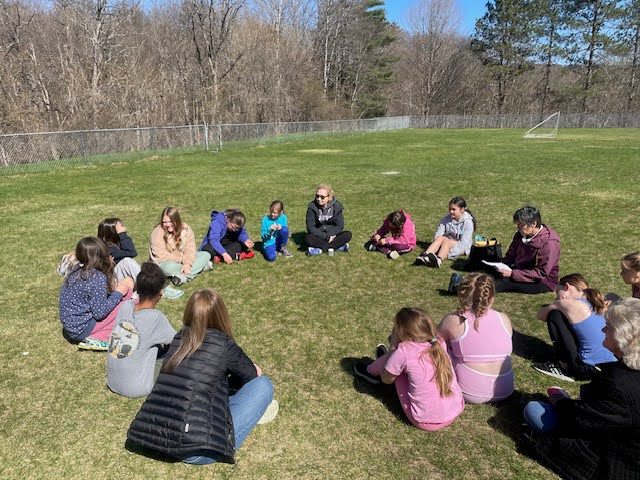 Before they start running laps during practice, participants in GOTR first work on a core life skill. Here, the team talked about strategies for saying no to peer pressure.
Before they start running laps during practice, participants in GOTR first work on a core life skill. Here, the team talked about strategies for saying no to peer pressure.
Photo Provided Some girls, like Regan Mock, had such fond memories of their time participating in GOTR with Burke, Rhoades, and Stone, that they chose to come back during their last two years in highschool to volunteer as a junior coach.
Some girls, like Regan Mock, had such fond memories of their time participating in GOTR with Burke, Rhoades, and Stone, that they chose to come back during their last two years in highschool to volunteer as a junior coach.
Photo Provided
The girls have fun, in part because of the substantial time and energy that the coaches pour into making the event a success. “At the end of the year, it is just so obvious how dedicated these coaches are to the girls and this program,” said Mock. “At the 5k, they’re out there and they’re dancing and they’re jumping around. They’re working so hard to help everyone have a good time, and they’re good at their job.”
Last year, the coaches helped all the girls create tutus for the race, which was an enormous hit. “It was so fun. We got to make tutus, and we got to pick whatever color we wanted,” said Taylor. “And then we got to run in them. We should [do it] again!”
For the coaches, the race can be a culminating moment where they can see the impact of the support they’ve given throughout the season. “Every year, I get really emotional at the 5k,” said Stone. “It’s so wonderful to see the proud look on their faces when they finish the race and they realize that they actually did it. They’re absolutely beaming. For me, that is incredibly rewarding.”
As the girls get older and come back year after year, the coaches are able to watch their development, both in the classroom as teachers and on the fields as coaches. “There’s so many moments where you just see them shine, and you’re just so proud of them,” said Rhoades. “You see them using the tools that we have given them and have taught them. It’s incredible.” The lessons and confidence girls learn over those three years often stick with them long after they leave the program.
After 14 years, it’s not uncommon for Burke to run into grown-up participants who have stayed in the community. “I had to bring a friend to the hospital a couple of months ago and the girl who was checking us in was a former Girl on the Run,” said Burke. “It’s just nice to see them as young adults and for them to say, ‘Oh, I really enjoyed Girls in the Run,’ and talk about it as a fond memory. It makes you feel like you’ve made some impact on them.”
All three coaches are stepping back from Girls on the Run because they’re retiring from teaching. “If we were still teaching, there’s no doubt that we would still be coaching Girls on the Run next year,” said Rhoades.
While they don’t have a replacement coach yet, Rhoades is optimistic that they’ll be able to find one for next season. “I’m very hopeful someone will step up, because I do get a little teary thinking about not doing it anymore. After so many years, it’s part of you,” said Rhoades.
To the girls who have run with them, however, it seems firmly the reverse: the coaches are a core part of GOTR. “It just does not make sense that there’s going to be a Girls on the Run without these coaches,” said Mock. “Because when I think of Girls on the Run, I think of them and the time that we spent together. I don’t really have the words. They just have done a wonderful job.”
Video features
May 2
5:30 am
Interview with Woodstock Planning and Zoning Director Steven Bauer
Obituaries
May 2
6:55 am
Myrtle Biathrow
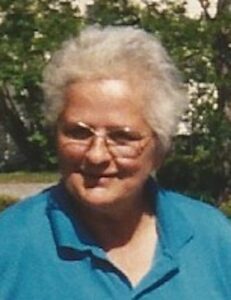 Myrtle Biathrow, 88, died Saturday afternoon April 27, 2024 at Pine Heights in Brattleboro, Vt.
Myrtle Biathrow, 88, died Saturday afternoon April 27, 2024 at Pine Heights in Brattleboro, Vt.
Myrtle was born on January 19, 1936 in Hanover, N.H. the daughter of Phillip H. and Laura (Powell) Biathrow. She graduated from Woodstock High School in 1954 and worked for the Corner Dairy Bar and the Woodstock Pharmacy until 1965 when she began caring for her sister Juanita whom she loved and cared for until Juanita’s death in 1996. Myrtle continued caring for those in need in the Woodstock Area for many years to follow.
Myrtle, known as Mert, was an avid sportswoman who enjoyed fishing and hunting. She also loved to dance. Mert had an infectious laugh and sense of humor and enjoyed sharing a good joke with her many friends.
She is survived by her siblings Murray Biathrow (Anna), Henry Biathrow (Jo), Marion Gent (Kent); and many nieces, nephews, cousins, and good friends. In addition to her parents, she is predeceased by three siblings, Juanita Biathrow, Francis Colby, and Royal Biathrow.
A funeral service will be held on Sunday, May 5 at 1 p.m. at the Cabot Funeral Home in Woodstock. Burial will follow in the Bridgewater Hill Cemetery.
Those wishing may make memorial donations to Zack’s Place, P.O. Box 634, Woodstock, Vermont 05091.
The Family is being assisted by the Cabot Funeral Home in Woodstock. An online guest book can be found at cabotfh.com.
May 2
6:55 am
Service for Christa A. Blanchard is on Monday
The graveside service for Christa A. Blanchard who passed away on February 19, 2024, will be held on Monday, May 6 at 1 p.m. at the Vermont Veterans Memorial Cemetery in Randolph, Vermont.
The Cabot Funeral Home in Woodstock is assisting the family.
May 2
6:54 am
Beverly Jane (Smith) Herrick
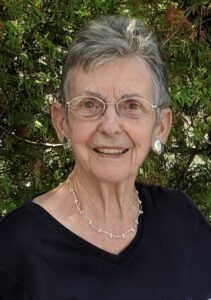 Beverly Jane (Smith) Herrick, a true warrior and beloved by all who knew her, passed away at the McClure-Miller Respite House on Friday, April 12 after battling both neuroendocrine and lung cancer for years. She was 84 years old. The family thanks the staff at the Respite House for their support and the tenderness with which they cared for Beverly in her last days.
Beverly Jane (Smith) Herrick, a true warrior and beloved by all who knew her, passed away at the McClure-Miller Respite House on Friday, April 12 after battling both neuroendocrine and lung cancer for years. She was 84 years old. The family thanks the staff at the Respite House for their support and the tenderness with which they cared for Beverly in her last days.
Beverly was born on October 7, 1939 in Hanover, N.H. to Wardie and Doris Smith (Horton). Beverly’s early years were spent in Keene, N.H. where she attended a one-room schoolhouse. She had fond memories of walking to a house nearby, pulling a wagon in the spring and fall and a sled in the winter, to retrieve the hot lunches made for the students by the woman who lived there.
Beverly’s family later moved to Taftsville, where Wardie worked as a mechanic and night watchman. Beverly attended Woodstock High School where she excelled academically, played snare drum in the marching band and was crowned homecoming queen her senior year. Upon graduating in 1957, Beverly declined an offer to have college paid for her by a local family and instead chose to take a job as secretary to the principal of Woodstock High School. It was here that she met the love of her life, John B. Herrick, who had just taken a teaching job at the school. They were married six months later and had two children.
Work brought the young family to Burlington, where John taught at Edmunds Middle School. Beverly worked many years for the Chittenden Bank in downtown Burlington and made many close friends. After retiring from the Chittenden, she worked at City Drug and volunteered for years for both The Fletcher Free Library and the Ethan Allen House, both in Burlington. Beverly was a regular supporter of the VT Food Shelf and the VT Young Writer’s Project. She wasn’t a joiner — with the exception of her bowling league — but enjoyed hosting get-togethers with family and friends as well as reading, gardening, walking, and exploring Vermont. She was fiercely independent and cared for her husband during his battle with Alzheimer’s and Cancer right up until he died. Her love for him was unconditional and inspiring.
Beverly is predeceased by beloved husband John. Many fun times and memories were made during their long marriage. They had two children who are forever grateful to have had such loving, supportive, and accepting parents. She was also predeceased by her parents and her sister Margaret Wilson. She leaves behind her children, Laurinda Hulce and her husband, Barry; her son, Christian Herrick; and her grandchildren: Zoe Hulce, Gwynevere Hulce, Ethan Herrick, and Zander Herrick. She also leaves many other beloved friends and family members both near and far.
The family would like to thank Leon Emmons and his wife Linda for their support of Beverly over the years, especially since the death of her husband John, who Leon had been friends with since they were both 5 years old.
Special thanks also to Beverly’s niece and lifelong friend, Lois Silva, who spent the last few days of Beverly’s life with the family at the Respite House and provided more support than can be put into words.
Beverly will be forever missed. A small graveside service will be held at a later date to fulfill Beverly and John’s wish that their ashes be combined and then buried at Lakeview Cemetery on North Avenue in Burlington.
The family asks that donations honoring Beverly be made directly to either the Chittenden County Humane Society, The Vermont Foodshelf, or the McClure-Miller Respite House. Please visit awrfh.com to share your memories and condolences.
May 2
6:54 am
Kelly Flora (Bagley) Kangas
 Our sunshine, Kelly Flora (Bagley) Kangas left this world far too early on Thursday, April 25 from complications of an illness at the Jack Byrne Center. Kelly entered this world the last of four children on September 6, 1979, just minutes behind her twin brother, Daniel. Known for her independent, fun-loving personality, Kelly was a child who melted the hearts of all who met her while she moved mountains.
Our sunshine, Kelly Flora (Bagley) Kangas left this world far too early on Thursday, April 25 from complications of an illness at the Jack Byrne Center. Kelly entered this world the last of four children on September 6, 1979, just minutes behind her twin brother, Daniel. Known for her independent, fun-loving personality, Kelly was a child who melted the hearts of all who met her while she moved mountains.
Kelly attended the Developmental Center in Woodstock, before continuing her education at the Woodstock Elementary School. She completed her educational career graduating from Woodstock Union High School in 1999. While in school, she competed in spelling bees, the Special Olympics, played softball, and volunteered at VINS. Kelly made many lifelong friends along the way.
Kelly was a lover of animals, family, and friends but her greatest love was her husband, Michael Kangas, who she married on September 8, 2009, in a garden ceremony at her great aunties’ house in Quechee. Kelly and Mike were inseparable. Together they loved to travel and expand their fur family which included many cats, rodents, and reptiles. Her dog, Gracie, was with her in her final days.
Independence was important to Kelly. She worked when her health allowed her and left her mark in many places of employment, including the Mountain Creamery, Price Chopper, Dartmouth College, Kmart, Little Caesars, and the Union Arena. Kelly grew up in Bridgewater but she and Mike spent many years living with Kelly’s great aunties in Quechee. They then set out on their own, living in White River Junction and Grey, Maine, but have most recently made their home in Hartford, Vt.
Kelly was predeceased by her grandparents, Winston and Hazel; her great aunties, Nellie, Pat, Barbara, and Kay; her great Uncle David; her Uncle Alan (she will forever be his Gertrude); and her hero, our father, Daniel. Kelly leaves behind a wealth of people whose hearts she touched in her short life, including but not limited to her loving husband, Michael; her mother, Cheryl; her twin brother, Daniel II (Danielle); and her sisters, Kristi and Katrina (Daniel). She will be remembered by her nephew Joss and her niece Gracie; her former brother in law, Jeremy; by many aunts and uncles; even more cousins, including her special cousins Shane, Jeremi, Mary, and Pam. More importantly, Kelly had many friends who are feeling her loss and we, her family, want to thank them for loving and supporting her along her journey.
Funeral services will be held on Friday, May 10 at 1 p.m. at the Hilltop Cemetery in Quechee. A celebration of life will follow at our family home in Bridgewater. Because Kelly had such a love of animals, contributions may be made to the Lucy Mackenzie Humane Society or the Jack Byrne Center in honor of their short but amazing care. Cabot Funeral Home is assisting the family with arrangements.
An online guestbook can be found at cabotfh.com.
May 2
6:54 am
Phyllis Bulmer
 Phyllis Bulmer passed away at home on April 13 in Ashland, Oregon at age 93. She lived with her husband Jim in Bridgewater, Vermont for 28 wonderful years at their beloved home, Uppermowing. In 2020 they moved to Mountain Meadows in Ashland to be close to family.
Phyllis Bulmer passed away at home on April 13 in Ashland, Oregon at age 93. She lived with her husband Jim in Bridgewater, Vermont for 28 wonderful years at their beloved home, Uppermowing. In 2020 they moved to Mountain Meadows in Ashland to be close to family.
Phyllis was born on October 31, 1930, in Red Bank, New Jersey to Dorothy and Sydney McLean. She grew up on the historic McLean family apple farm in Middletown, NJ where her father taught her to drive a truck around the farm when she was 12. In 1962, when the McLean farm became the set for the movie The Miracle Worker, Phyllis was thrilled to be on set during the filming and loved telling stories about meeting Patty Duke.
Phyllis graduated from Linden Hall Academy in 1948 and Carnegie Mellon University in 1952. Afterward, she moved to New York City where she met Jim. They were married on April 30, 1955, in a church filled with apple blossoms from the McLean farm.
One of the many things that made Phyllis so unique was her adventurous spirit. I think the time it first became evident was after college when she and three friends took a ten week camping trip across the country. From there, that spirit grew. Numerous camping trips exposed her family to all kinds of adventures. The greatest of these took place in 1971, when as a housewife in New Jersey, she got her husband and two young children to go on a week-long canoe trip in the wilderness in Canada. Another manifestation of this contagious spirit was when she started kayaking; friends soon also bought kayaks to go with her and in a short amount of time, a women’s group formed that went out weekly. At summer’s end the group would meet at Squam Lake for a weekend of paddling and celebration. Phyllis also enjoyed traveling the world with her husband. One of her most memorable trips was an adventure cruise to the Arctic Circle.
Phyllis was a lifelong volunteer. She was active in the Junior League of Monmouth County (NJ), King’s Daughters (VT), The Flower Guild of St. James Episcopal Church (VT) and The Ashland Food Project (OR). Phyllis served on the Board of Directors for the Lucy Mackenzie Humane Society (VT) and enjoyed reading to children at Zach’s Place in Woodstock.
Phyllis loved being creative. She and Jim did the finishing work on their home in Vermont. She was an avid knitter and loved telling friends she was “a hooker”. Phyllis made many hooked rugs in her lifetime and enjoyed laughing with her hooking group of friends. Her treasured rugs feature animals, flowers and Vermont landscapes.
Phyllis was a life-long dog lover and advocate. From the Beagle pups she played with as a child on the McLean farm, to her German Shorthair Pointers and Labradors, she always had dog pals. She adored her dogs Herman, Bobo, Jenny, Spot, Stitch, Harvey, Little Bit, Lightning, Luke, Katie and Kevin.
Phyllis is survived by her devoted husband of 67 years, Jim Bulmer, her children Jeb Bulmer and Blair Johnson, her grand-children Chelsea Johnson (Ryan), Caitlin Falzone (Jeff), Clay Johnson and Nathan Bulmer (Julissa), and her great-grandchildren Waylon Bulmer, Rowan Stenson, and Daxton Bulmer.
In lieu of flowers, please consider a contribution in Phyllis’ memory to New England Lab Rescue, Lucy Mackenzie Humane Society, or Zach’s Place.
May 2
6:54 am
Rosalie Mary (Goodrich) Cutter
 Rosalie Mary (Goodrich) Cutter, 93, passed away on April 26, 2024.
Rosalie Mary (Goodrich) Cutter, 93, passed away on April 26, 2024.May 2
6:54 am
Dennis Raymond Carroll
Dennis Raymond Carroll was born on July 4, 1942 in Rahway, N.J., to Frank Joseph Carroll and Hildur Margaret Carroll. He was called back to God on April 9, 2024 in Cathedral City, Calif., surrounded by the loving support of his wife, Carol Carroll, son, Matt Carroll, sister Alice Thompson, niece Peggie Jimcosky, and nephew, Scott Thompson. He is also survived and will be missed by his nieces Elizabeth Condren and Jennifer Barga; nephews Sean Condren, Hilary Condren, and Colin Condren; all their wonderful families, and his many great friends, former students, and colleagues.
Dennis graduated from Seton Hall University, with a degree in Classics, in 1964, and began teaching high school English and Latin in Governor Livingston, N.J.
On Aug. 3 of 1969, Dennis married Carol Condren. It was apparently such a case of true love that she gladly changed her name to Carol Carroll. Dennis and Carol had an amazingly wonderful, loving marriage, filled with joy, laughter, kindness, and goodness. They were soulmates in the purest sense and their marriage lasted fifty-four years. On November 10th of 1973, they welcomed their only son, Matt, and the three of them had fifty glorious years as a loving, very happy family.
A naturally charismatic and gifted teacher, Dennis devoted his career to education. He and Carol moved to Woodstock in 1977 and both taught at Woodstock Union High School. They loved their years in Woodstock, where Dennis eventually transitioned into administration and the position of Vice Principal. In 1986 Dennis moved to Long Island, N.Y., with Carol and Matt, and became the Middle School Director for Woodmere Academy, in Woodmere, N.Y. He went on to serve as the Upper School Director, for the newly named Lawrence Woodmere Academy and in 1994 he became the Headmaster. He served as Lawrence Woodmere Academy’s Headmaster for nine years and both loved and took great pride in that responsibility. He also formed close friendships with coworkers, parents, and students that endured the rest of his life. After retiring to Palm Springs with Carol in 2004, he continued to teach on a part-time basis at College of the Desert.
Inspired by an insatiable appetite for life, Dennis devoted himself to his loved ones and was always there when one of them needed support. He had a wonderful sense of humor, loved to make people laugh, and was known for his own hearty, genuine, and unrestrained laughter. Dennis and Carol both gave generously of their time and energy to their church communities in Vermont, New York, and most recently at Our Lady of Solitude in Palm Springs.
Special thanks to Our Lady of Solitude, where the funeral service will be held on Saturday, May 18th at 12 p.m. And a world of gratitude to the gifted and generous care providers at The Palms at La Quinta.
Please honor Dennis’s memory with kind acts toward others, the indulgence of laughter with family and friends, and perhaps a remembrance to a favorite charity of your own.
May 2
6:50 am
Joan Marie (Boutilier) Allen
Joan Marie (Boutilier) Allen, 77, died Friday, April 19, 2024, at home in Reading with her family by her side.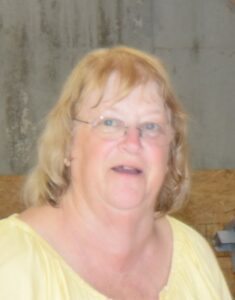
She was born August 8, 1946, in Windsor, VT, the daughter of William and Kathleen “Kitty” Boutilier. Joan grew up in Windsor and attended Windsor schools. She was married to Robert Allen, and they made their home in Reading where they raised their three children until later divorcing.
Joan worked at the Kedron Valley Inn in the kitchen and then as a housekeeper for the Lutz family for over twenty-five years until her health no longer allowed her to work. She met Paul Seaver on March 16, 1979, and they have lived in Reading as life partners for the past forty-five years.
Joan was a member of the Reading Fire Department Auxiliary for many years, but most of all loved being with family and friends, especially her grandchildren.
She is survived by her partner, Paul Seaver of Reading; children Kevin Allen (Pam) of Manchester, NH, Kim Allen, and Curt Allen (Kate) both of Reading; grandchildren Darren, Nicholas, Alexis, Anthony, and Brody; brother Richard Boutilier of Windsor; and nieces and nephews.
She was predeceased by her parents and a sister-in-law, Anita Boutilier.
A graveside service will be held at the Felchville Cemetery in Reading on Friday, May 3 at 1 P.M.
Condolences may be made to Joan’s family in an online guestbook at knightfuneralhomes.com.
Contributions in her memory may be made to St. Jude Children’s Research Hospital, 501 St. Jude Place, Memphis, TN 38105, or at stjude.org.
Annual Appeal
May 2
5:32 am
Now it’s official -- IRS approves Journalism Foundation as public charity, donations are tax deductible
By Dan Cotter, publisher
A huge sigh of relief and a fist pump were my first reactions, as well as a gaze skyward as I mouthed the words “thank you!” The tears welling up in my older friend’s eyes were his response when I told him.
Then we shared a long, hard hug.
After lots of research and preparation, and then six months of waiting for the application to be processed, Phil Camp and I recently learned that the IRS has approved the Woodstock Region Journalism Foundation’s application for tax-exempt status under section 501(c)(3) and deemed the Foundation to be a public charity.
The approval wasn’t in much doubt, really. But now it’s official.
The Foundation was established last August and it is primarily dedicated to preserving the Vermont Standard and its role in informing citizens and supporting democracy in our area well into the future. The Foundation has a board made up of local residents who care deeply about our community and the value local journalism provides. Phil and I are on the board too. Together, we’re working to keep the 171-year-old Vermont Standard going while taking steps to position the paper’s print and digital journalism for long-term sustainability.
Recognizing the critical role the Standard plays in informing and connecting our community, this Foundation wants to avoid letting our area become a “news desert,” as has happened in hundreds of other places throughout the US in recent years. Newspapers like the Standard are currently dying off at a pace of 2.5 per week. Nor do we want to end up like the hundreds of cities and towns where profit-seeking corporations that have no devotion to the public welfare have acquired their local paper and stripped it of its resources, to the point that it is only a pathetic shadow of its former self and incapable of doing its job.
Providing accurate, credible, reliable news and information to its audience is a local news organization’s primary role. A functioning democracy requires an informed, engaged public. The Woodstock Region Journalism Foundation’s board members, advisors and friends will help Phil and I in our mission to raise enough money to keep quality journalism flowing here.
So, I’m glad to report that any donation you’ve made to the Woodstock Region Journalism Foundation to support the Standard’s mission to inform, connect, and educate our community on issues of public importance is indeed tax-deductible dating back to the inception of the Foundation in late August 2023, as all donations will be going forward.
At 88 years old, Phil feels a real sense of urgency about making sure that our community will always have local journalism – especially given the 40+ years he’s dedicated to leading the paper and his unrivaled love for Woodstock and its surrounding towns. We know we’re in a race against the clock. But now, with the Foundation’s charity status and your tax deduction confirmed, we hope there will be even more support from donors and family foundations that will help us accomplish this very important mission.
Thank you from the bottom of our hearts for your encouragement and generosity. If you would like to contribute to our Annual Appeal, please send us a check at PO Box 88, Woodstock, VT 05091, or go to our Vermont Standard THIS WEEK website at https://thevermontstandard.com/annual-appeal/ to make a contribution with your credit card. Please be sure to make your check out to the “Woodstock Region Journalism Foundation.”
May 2
5:30 am
Making friends while trying to make ends meet
By Dan Cotter, publisher
Friendship. That’s what I’m thinking about as I publish this year’s fourth and final annual appeal article.
Of course, that makes perfect sense given our heritage.
If you’ve ever seen longtime Vermont Standard icon Phil Camp in action as he walks down Central or Elm Street, or when he’s seated near the fireplace at the Woodstock Inn, you know what I’m talking about. I nicknamed him the “Unofficial Mayor of Woodstock” because, like a campaigner, he seems to want to talk to everyone he encounters, whether it’s an old friend (he’s got quite a few, as he’s lived here almost 88 years) or a visitor from wherever. His opening line with those visitors — after complimenting them on their cute child or puppy — is “where are you from?” After giving them a warm welcome and trying to get to know them better, he typically tells them a little more about our area and then a lot about the Vermont Standard. He always closes these brief exchanges by encouraging them to check out our Vermont Standard THIS Week website or buy an eEdition subscription so that they can keep up with our beautiful Woodstock area after they return home.
It’s as though he was commissioned by the Chamber of Commerce, but really, he just likes to make friends.
And he does. On occasion he even hears back from folks he’s greeted, thanking him for being one of the highlights of their recent visit.
Likewise, if not for the friends we’ve made, the Standard, like so many other newspapers around the country, would have closed up shop at some point in the past few years after losing access to such a large portion of the advertising dollars that traditionally supported community journalism. Thankfully our readers stepped up to fill the gap with their donations. Thanks to them — our friends — we’re still alive and striving to do our best, and I am still able to write this to you today.
We may have struggled to make ends meet, but we have been able to make some good friends. And that’s a blessing.
I’m reminded of Carole King’s song, “You’ve Got a Friend”
If the sky above you
Grows dark and full of clouds
And that old north wind begins to blow
Keep your head together
And call my name out loud
Soon you’ll hear me knockin’ at your door
Some of our friends seemingly came knockin’ out of nowhere to support us, to support our community by preserving its journalism and to support its democracy. They asked for nothing in return, not even for recognition. We are eternally grateful to them. We hope to make them proud, and we hope they’ll continue to have our back. And we hope we’ll continue to meet new friends along the way.
Four special friends have now come together to serve on the board of the new Woodstock Region Journalism Foundation: Charlie Shackleton, Darlyne Franzen, Rob Wallace, and Bill Emmons. As I announced a few weeks ago, the Woodstock Region Journalism Foundation, which is dedicated primarily to preserving the Standard and its role in informing citizens and supporting democracy in our area well into the future, has formally filed an application for recognition of tax-exempt status with the Internal Revenue Service. These Foundation board members believe in us and they care deeply about our community and the value the Standard provides. Right now, they are encouraging their own friends to support this important cause at this critical juncture.
If you’re willing to make a donation to the Woodstock Region Journalism Foundation, your contribution will be utilized in the form of project grants to support our mission to inform, connect, and educate our community on issues of public importance. Contributions will be tax-deductible dating back to the inception of the Foundation.
Winter, spring, summer or fall
All you have to do is call
And I’ll be there, yes, I will
You’ve got a friend
You’ve got a friend
Ain’t it good to know you’ve got a friend
Indeed, it is good to know that you’re all our friends. So many community newspapers throughout the U.S. are braving their final hour. But, especially with the establishment of the Woodstock Region Journalism Foundation, we’re hoping that the Vermont Standard is now embarking on its finest hour, hand in hand with you, our friends.
To make a donation, please send us a check at PO Box 88, Woodstock, VT 05091, or go to our Vermont Standard THIS WEEK website at www.thevermontstandard.com to make a contribution with your credit card. Be sure to make your check out to the “Woodstock Region Journalism Foundation.”
UPDATE: The IRS has approved the Foundation’s application for nonprofit status, so your gift will be tax-deductible.

May 2
5:29 am
Let’s not lose our sense of place
By Dan Cotter, publisher
The main thing I remember is that it was always loud. And a bit chaotic.
With seven children all just a year apart, there tended to be a lot of clamor and teasing as we’d prepare the dinner table in our house where I grew up. Dad was home from work and it was time to eat!
This ritual took place more or less every day. Everyone had scattered to work and school and sports, part-time jobs, and all sorts of other activities throughout the day, but in the evening, we gathered for the one meal we ate together and to talk about what was going on. It was there around that table — where elbow space was at a premium — that we learned of each other’s latest achievements, trials, and disappointments, laughed at each other’s tales from the front, the foibles we had experienced or witnessed that day, found out about what’s coming up for the family, including challenges we faced, and on so many occasions, after expressing our opinions about one thing or another, we engaged in fierce debate.
Sure, we spent moments with a parent or certain siblings during the day and we picked up bits and pieces of information or gossip along the way, but it was at the dinner table that we could count on hearing the straight story from our parents and each other. There, as we kept up with our family’s day-to-day news, we also strengthened our bond.
Of course, the dining experience is probably a little different for families these days. Households tend to be smaller and parents’ work schedules aren’t as predictable. Plus, with all of the activities children participate in that cut into mealtime, it may not be possible for some families to gather together on a daily basis. The catching up and bonding may take place on a more infrequent basis or in a different setting, but it’s just as important nonetheless.
Having a regular, ongoing opportunity to share news and information that we and only we are truly interested in gives everyone the sense that they’re in the know and an important member of the family. It helps us create our shared identity.
I think it’s pretty much the same in a small community like ours.
Technically, just by virtue of living here, everyone is part of the community. However, it’s the access to our own news and information — that regular habit of keeping up with what’s going on among us – that nurtures our sense of belonging, our shared identity, and it helps give our community its sense of place.
When we are able to better know each other, and know more about our local businesses and organizations, our history and traditions, and all the constantly-changing issues and narratives that are playing out in our community, we can truly feel connected and at home in this unique place and we can participate in our community better.
For example, in our community, and only in this particular community, the Wasps are both the king and queen when it comes to sports. Issues such as retiring public servants, accommodations for tourists, proposed new schools, and short-term rental regulations are headline news here. We have our very own natural disasters to contend with, as well as the local controversies and court cases everyone is following. We have a multitude of entertainment offerings to keep abreast of. We have people who are well-known and admired here, and there are always examples cropping up of ordinary people doing extraordinary things here that we like to hear about. Plus, we gather each year to vote on local candidates and topics that affect us personally, financially and emotionally. And people here certainly aren’t afraid to express an opinion and have a debate from time to time.
All of those concerns are an integral part of life here. Our community’s identity then, is more than just a collection of pretty towns surrounded by farms and lush, rolling hills. It’s actually our shared interests and experiences that give this community its true sense of place.
I liken the Vermont Standard to the “dinner table” of my youth, where we gather to keep up on things that are of interest to this community. Our reporters collect that news and information and we package it, deliver it, and make it possible for all of us to digest it each week so that we come away more informed and hopefully knowing and feeling a little closer to each other. In this way, we can more fully embrace our collective experience and be ready to participate, armed with a common, credible set of knowledge. Like with a family at mealtime, our shared identity is strengthened and we’re all better off.
I hope you’ll consider joining our mission as we scramble to keep the Standard going despite the financial pressures that threaten its survival. We’ve got a large — though not insurmountable — operating deficit to overcome, and we just can’t keep this up without significant help. Our hope is that you agree with us that our local journalism is nourishment for our community and worthy of your investment. We hope you’ll make a donation to our 2023 Annual Appeal, and even better, consider adding us to the organizations that you make donations to each year so that we can achieve some staying power. If you own a business, we hope you’ll consider advertising with us as well.
Some good news is that last month, the Woodstock Region Journalism Foundation was created. The Foundation, which is dedicated primarily to preserving the Standard and its role in informing citizens and supporting democracy in our area well into the future, has formally filed an application for recognition of tax-exempt status with the Internal Revenue Service. The Foundation has a board made up of local residents who care deeply about our community and the value the Standard provides. Phil Camp and I are on the board too. Together, we’ll work to continuously improve the paper’s print and digital journalism, and position it for long-term sustainability.
If you’re willing to make a donation to the Woodstock Region Journalism Foundation, your contribution will be utilized in the form of project grants to support our mission to inform, connect, and educate our community on issues of public importance. Contributions will be tax-deductible dating back to the inception of the Foundation.
To make a donation, please send us a check at PO Box 88, Woodstock, VT 05091, or go to our Vermont Standard THIS WEEK website at www.thevermontstandard.com to make a contribution with your credit card. Be sure to make your check out to the “Woodstock Region Journalism Foundation.”
UPDATE: The IRS has approved the Foundation’s application for nonprofit status, so your gift will be tax-deductible.

May 2
5:28 am
We’re betting on this community, at this time, for this mission
By Dan Cotter, publisher
If not us, who? If not now, when?
These soul-searching questions have been pondered by leaders throughout history when faced with situations that required great courage and determination. In fact, longtime Vermont Standard publisher Phil Camp and I asked ourselves those same questions several years ago as we embarked on our mission to preserve quality local journalism for Woodstock and its neighboring towns, including Hartland Pomfret, Barnard, Quechee, Bridgewater, Reading, West Windsor, Plymouth and Killington. We were inspired by those questions as we set out to save the Standard’s print and digital journalism that informs and connects our community even though the advertising revenue that has supported the paper through the years has diminished.
Just like other newspapers in large and small towns throughout the country, the Standard has been fighting for its life. Similar to everywhere else, advertising revenue is evaporating as smaller, independent retailers and service providers that traditionally supported local news organizations with their ads have been replaced by chains, big box stores and online sellers that typically do not support community journalism. And many classified advertisers now use dedicated help wanted, auto, and real estate websites instead of a newspaper. Plus, the residual effects of the COVID-19 economic shutdown have further eroded many businesses’ advertising budgets.
Without sufficient advertising support, the Standard, like all newspapers, relies heavily on the public to help fund its local journalism. And that journalism is needed now more than ever in a society dominated by social media echo chambers, political and social division, and the proliferation of misinformation. Still, the Standard’s situation is dire. If not for contributions from philanthropic citizens who fully recognize the value of having local journalism in our community, the paper would lose several thousand dollars each week, and sadly — after a 170-year run — there would be no Vermont Standard.
Saving this one small newspaper in Vermont is obviously important to the community here, but it also has national implications. Papers like the Standard are dying off at a pace of two per week. And far too many newspapers that are still alive have been acquired by corporations that have stripped them of their resources, turning them into “ghost papers” that are unable to adequately inform and serve their communities.
Most newspapers are on the brink of insolvency. We must find a way in this country, both collectively and individually, to keep credible local journalism alive, to keep citizens informed and connected. Our democracy depends on it.
The Standard is symbolic of this problem our nation faces. But if there is any place in the country where people truly love their community and treasure their newspaper — which is still produced by a small but devoted staff trying to do the right thing — it’s Woodstock, VT. If this community can’t find a way to sustain its local journalism, there is probably little hope for the rest.
Unlike most other newspapers, the Standard, which already operates on a shoestring, has resisted the strategy of further stripping down its small operation to bare bones. Instead, we are attempting to preserve it as a quality newspaper that can continue serving our community well.
Phil always maintained that the Standard actually belongs to the community. He’s right, and it’s in their hands now. If local journalism can indeed be saved, it will happen here, where citizens are so engaged and appreciation for the Standard is so strong.
If not us, then who? If not now, then when?
We’ve made significant progress. Last month, the Woodstock Region Journalism Foundation was created. The Foundation, which is dedicated primarily to preserving the Standard and its role in informing citizens and supporting democracy in our area well into the future, has formally filed an application for recognition of tax-exempt status with the Internal Revenue Service. The Foundation has a board made up of local residents who care deeply about our community and the value the Standard provides. Phil and I are on the board too. Together, we’ll work to continuously improve the paper’s print and digital journalism, and position it for long-term sustainability.
We hope you’ll take a moment to make a donation to the Woodstock Region Journalism Foundation. Your contribution will be utilized in the form of project grants to support our mission to inform, connect, and educate our community on issues of public importance. Contributions will be tax-deductible dating back to the inception of the Foundation.
Your contribution has the potential to make a real difference – to save our paper and give us a chance to put in place initiatives that ensure our long-term sustainability, to draw attention to the loss of quality local journalism across the country, and to motivate others to advocate for solutions to this crisis before it is too late.
If you’re willing to make a donation to our 2023 Annual Appeal, please send us a check at PO Box 88, Woodstock, VT 05091, or go to our Vermont Standard THIS WEEK website at www.thevermontstandard.com to make a contribution with your credit card. Be sure to make your check out to the “Woodstock Region Journalism Foundation.”
UPDATE: The IRS has approved the Foundation’s application for nonprofit status, so it’s confirmed that your gift will be tax-deductible.
![]()
May 2
5:28 am
Since no news would be bad news, here’s some good news

By Dan Cotter, publisher
Anyone keeping track has probably noticed that the Vermont Standard’s annual appeal is starting late this year. In the past, I’ve written a series of four columns in August-September to let you know how we’re doing in Phil Camp’s and my quest to keep our local journalism viable for Woodstock and its neighboring towns. Here we are now at the end of September and I’m finally getting back to you!
Still, I think the message I have to share today is one worth waiting for.
Everybody knows by now that newspapers all throughout the country have been hanging by a thread. The Standard is no different. In the past, I’ve described our financial challenge to you here in the pages of the paper and Phil and I have met with a number of you personally to discuss the mission we’re on to try to ensure that the Standard continues to keep citizens here informed and connected well into the future, despite the loss of much of the traditional newspaper advertising revenue that supported local journalism in communities like ours for the past hundred years. We think that the public service newspapers like ours perform is critical to the health of our American democracy, and we believe that our community would be greatly diminished if we’re not successful in our quest to rescue the Standard.
Just ask the more than 20 percent of Americans who now live in communities that have no trustworthy, in-depth, or independent news source reporting on their local issues.
About 2,500 newspapers around the country have gone out of business in the past 20 years, and many, many of those that still exist are now just a shadow of their former selves, as corporate scavengers have acquired them and stripped them of their resources, leaving them alive but emaciated and wholly incapable of performing their duty to their community.
We’re not trying to merely keep some semblance of a paper alive here. We’re trying to preserve a good, independent, 170-year-old purveyor of local journalism (both in print or digital formats) that our community can continue to trust, rely upon, and be proud of.
And we are clearly not alone on this journey. For the past few years, increasing numbers of those who read and care for the Vermont Standard have pitched in to offer assistance. We’ve received donations and significant financial support from people who believe that having fair-minded, professionally produced, independent local journalism is extremely important to the quality of life here, and it’s a safeguard against sources that may otherwise spread misinformation and even disinformation in the community.
All of these angels who helped us did so with no expectations other than that we’d continue to do our best to inform, entertain, and connect the community we exist to serve. They did it out of their love for Woodstock and the neighboring towns that make up our community. Without even the benefit of a tax deduction.
Five years ago, wise friends of the Standard advised Phil and me to explore whether the paper could be operated by a nonprofit entity – which would enable it to receive tax-deductible contributions from donors and apply for grant funding. At the time, prospects for that route didn’t look promising. But with the ongoing counsel of those friends and others who have assisted us along the way, we have now identified and set out on a path forward that we hope will lead to the approval of a new 501(c)(3) organization to operate the newspaper.
This month, the Woodstock Region Journalism Foundation was created. The Foundation, which is dedicated primarily to preserving the Standard and its role in informing citizens and supporting democracy in our area well into the future, has formally filed an application for recognition of tax-exempt status with the Internal Revenue Service. The Foundation has a board made up of local residents who care deeply about our community and the value the Standard provides. Phil and I are on the board too. Together, we’ll work to continuously improve the paper’s print and digital journalism, and position it for long-term sustainability.
Now you can make a donation to the Woodstock Region Journalism Foundation and your contribution will be utilized in the form of project grants to support the Vermont Standard’s mission to inform, connect, and educate our community on issues of public importance. Contributions will be tax-deductible dating back to the inception of the Foundation. Of course, we recommend potential donors discuss with their own advisors any specific questions about their particular contributions.
We are very excited about this development, and we hope that more people will now be willing to support the Standard with a donation, and perhaps past donors will even consider increasing their contribution. For those who have family foundations, we hope that you’ll consider adding the Woodstock Region Journalism Foundation to the causes you regularly support.
Our need is quite urgent, to say the least. After many months of preparation, we are certainly pleased to now be in this position, but we’re late getting started with our annual appeal and we’ve incurred additional expenses to set this up, so that thread we’re clinging to is awfully frayed right now. We are profoundly grateful for anything you can do right away to help us get on firmer financial footing.
If you’re willing to make a donation to our 2023 Annual Appeal, please send us a check at PO Box 88, Woodstock, VT 05091, or go to our Vermont Standard THIS WEEK website to make a contribution with your credit card. Be sure to make your check out to the “Woodstock Region Journalism Foundation.”
UPDATE: The IRS has approved the Foundation’s application for nonprofit status, so your gift will be tax-deductible.
May 2
5:00 am
Hard to imagine Woodstock without the Standard
“View From Here”
By Sandy Gilmour, Woodstock resident
If you are reading this column right now, that’s good news for the community. It means you probably paid for this paper, hard copy or online, maybe even made a donation to it, and value its contribution to our lives in Woodstock and surrounding areas. We are so fortunate to have the Vermont Standard week in and week out. For years, small-town dailies and weeklies have been closing their doors, leaving communities without a soul. Papers like the Standard are dying off at the rate of two per week across America.
Such towns are called “news deserts.” Imagine weeks, months and years going by with no professional reporting on selectboards, trustees, school boards, taxes and roads. Zero stories about public school events, sports, student accomplishments, obituaries, gardening tips, neighborly cooking advice, local history, and no reports from towns from Brownsville to Pomfret.
We would know next to nothing about the interminable Peace Field Farm restaurant delay, the Ottauquechee Trail head fiasco, the high-stakes Woodstock Foundation controversy and the fatal shooting off Central Street, including the bravery of Woodstock Police Sgt. Joe Swanson. In my view, these stories have been really well reported.
To not get these stories delivered to us every week would be a news desert right in verdant Woodstock, for sure, a gaping hole left to be filled by rumor and mis- and dis-information, the precursors of community dissolution. So we are blessed indeed to have had the Vermont Standard around — nonstop — since 1853, and owned by beloved Woodstocker Phil Camp, now 87, since 1981.
But as Mr. Camp has pointed out many times over the years, the paper’s solvency hangs on a thread and now more than ever. In hundreds of towns across America, owners, beleaguered by losing subscribers and advertising to social media, simply folded or sold out to hedge funds and private equity firms, whose investors are bereft of community values. Not Phil Camp. He has always said, “I never sold out. I’m never giving up.” He made up for past deficits (difference between expenses, like staff, and income from subscriptions and ads) out of company savings from better times, week after week. He stayed with it after being flooded out by Tropical Storm Irene in 2011 and being burned out by the Central Street fire of 2018 (taking out his camera and snapping photos of the flames and rubble).
The paper was in dire straits when COVID hit, saved by the forgiven federal PPP (Paycheck Protection Program) loans through 2021, when the largesse ended. Then beginning in January 2022, the community stepped up, responding to a fundraising appeal. I was rather stunned to learn from the Standard’s publisher, Dan Cotter, that the paper’s annual shortfall of $150,000-$200,000 is being covered by donations from local Woodstock residents. There are many (and appreciated) donations in the $50-$100-$200 range, but really heavy lifting is being done by donors of means who, Mr. Cotter says, highly value the contribution local journalism makes to communities. Several of these more-than-generous and anonymous donors contribute $20-25,000 and more — each — and, Mr. Cotter says, without any hint of trying to influence coverage. Without them, surely there would be no Vermont Standard in the mailbox or online, just the unreliable grapevine. At the same time, the paper is moving to create other revenue streams, including an online advertising app for Woodstock happenings and a magazine, in addition to improving thevermontstandard.com website for go-to news.
Still, the operation is bare bones. It seems to me a miracle the paper “hits the streets” without fail every Thursday with some pretty good and important stories that we need to know about, and many features that are good to know about. And there are just two, count them, two, full-time staffers who report stories: the seasoned and prolific Tom Ayres, and Tess Hunter, who is also the managing editor. Ms. Hunter says reporter staffing is the big issue; she has on hand freelance contract reporters that can be assigned to stories if they are available and if they want to spend the evening at yet another unexciting if important selectboard meeting. “It’s a constant juggling act,” Ms. Hunter told me, “between finding the right person for the story and just getting people to say ‘yes.’” Still, she is committed, saying, “Without us making the attempt, there would be no common base of understanding and little sense of the community spirit of the area or the hard news happening within it.”
Volunteer contributors are crucial; regular community writers like Jennifer Falvey (insightful musings on life) and Kurt Stauder (pointed political observations) are popular. Mary Lee Camp’s business column is relentlessly informative.
Other key staff are listed in the box below — lean and spare!
Publisher and editorial content director Dan Cotter, 64, hired by Mr. Camp in 2018 after years of informal consulting for the Standard, is not a household name in Woodstock, though he is hands-on every issue. He owns a condo in the area and is here about half the month, returning to his home and wife in Chicago for the remainder. He has decades in the industry as an executive and consultant, was head of the New England Newspaper and Press Association, and takes a no-nonsense hard line on newspaper independence and objectivity. It’s an unusual situation but Mr. Camp, still the president of the company, has total confidence in Mr. Cotter and has turned over the Vermont Standard, its operation, assets and its future, to his close friend. Mr. Camp has indeed not “given up,” but hopes to ensure his dear newspaper’s future with this arrangement.
So where does the Standard go now? Around the country, journalists are reinventing newspapers and online reporting. The most promising seems to be the non-profit model, where deductible contributions from community-minded supporters can be made even as the publication accepts subscription fees and what advertising there is left. There are indications that the Standard is moving in this direction, and the sooner the better, in my view. When I pressed Publisher Cotter on the issue, he responded with this very encouraging comment:
“In the past couple of years, members of the community have literally kept the Standard alive with their donations — and a handful of them have given very substantial sums, even without the benefit of a tax break. That’s how much they value the role our local journalism plays in the quality of life in our area. We are working now to put the paper on a path to where donors could indeed have a tax benefit. For it is essential to our democracy and our own survival that we have the financial support we need from the community to maintain a news organization — modest as it is — that’s capable of producing good local journalism that adequately informs our citizens.”
I can’t imagine Woodstock without the Vermont Standard. The new business model provides great hope the paper will not only survive but as a Woodstock-based non-profit, continue to expand coverage to benefit all of us in this great community.
Note: This (unpaid) column originated with me alone!
Sandy Gilmour is a retired NBC News correspondent who lives in Woodstock.
May 2
1:01 am
Newspapers Are In a Race Against the Clock
Woodstock
Business Resources
May 2
3:35 am


